Search Results
Viewing: 1-454 of 454 | All

Condition
Clubfoot (Talipes Equinovarus)
Clubfoot, also known as talipes equinovarus (TEV), is a common foot abnormality, in which the foot points downward and inward. It occurs twice as often in males than in females. Signs of clubfoot include a short and/or tight Achilles tendon (heel cord) and a heel that is turned in.
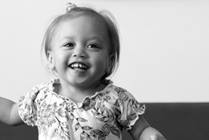
Condition
Gastroesophageal Reflux
Gastroesophageal reflux, also known as chalasia or spitting up, is so common that it should be considered normal for babies. In infants, the sphincter that keeps food in the stomach is not as strong, so some formula or food can come back up. Reflux can cause heartburn which may make the baby fussy.
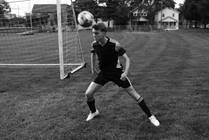
Condition
Hip Flexor Strain
The hip flexor muscles are in the front of the thigh. They are made up of the iliopsoas (i-lee-uh-sow-uhs), sartorius (saar-taw-ree-is), and rectus femoris (rek-tuhs feh-mr-uhs) muscles. They allow the hip to lift up, or flex. Muscle attaches to bone via a tendon.
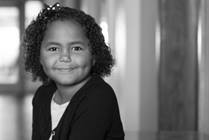
Condition
Intracranial Hypertension (Pseudotumor Cerebri)
Idiopathic intracranial hypertension, sometimes called pseudotumor cerebri, is a condition in which the cerebro-spinal fluid is not able to drain normally.

Condition
Zoonoses
Zoonoses, infections that people can get from animals. Children with compromised immune systems are at higher risk for these infections. The information in this Helping Hand™ will help with safe animal and pet care.

Condition
Back Sciatica
The sciatic nerve is the longest nerve in the body. Sciatica is caused by increased pressure placed on the sciatic nerve, most commonly from a herniated disk.

Condition
Precocious (Early) Puberty in Children
This Helping Hand™ is about early puberty in children. Sometimes, puberty can start earlier and before signs show.
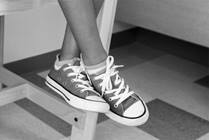
Condition
Folliculitis
Folliculitis is a common inflammation of the hair follicles, which are the openings in the skin where the hair grows. The rash appears as small red bumps or pus bumps that can itch or be mildly painful.
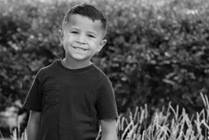
Condition
Nasal Congestion
Nasal congestion, nasal obstruction, and mouth breathing are all descriptions of a similar condition where the nasal passages are blocked, resulting in the sensation of difficulty breathing through the nose.

Condition
Enlarged Adenoid
The adenoid is a structure located at the junction of the nose and throat (nasopharynx) that functions in the immune system. Adenoids sometimes become enlarged during childhood and the increased size may cause problems.

Condition
Heart Failure
Heart failure means the heart’s ability to squeeze is weakened. As a result, the heart cannot pump enough oxygen and nutrients to meet the body’s needs.
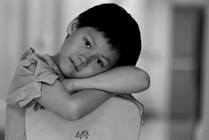
Condition
Hirschsprung Disease
Hirschsprung disease, also known as megacolon, is a congenital condition that causes blockage of the intestine. The blockage is caused by a lack of nerves in the bottom segment of the colon. Children with Hirschsprung disease will need surgery to remove the non-functional segment of the intestine.

Condition
Coarctation of the Aorta
Coarctation of the aorta is a heart defect that is present at birth (congenital) in which the aorta is narrowed and results in decreased blood flow to the lower body. The left ventricle (pumping chamber) of the heart must work harder in order to pump blood through the narrowed aorta.
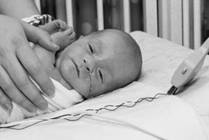
Condition
Ebstein's Anomaly
Ebstein’s anomaly is a heart problem that some people are born with. It means the tricuspid valve, which helps control blood flow in the heart, doesn’t work right. Most babies with severe Ebstein’s need surgery at some point.

Condition
Total Anomalous Pulmonary Venous Return (TAPVR)
Total anomalous pulmonary venous return (TAPVR) is a condition where the blood vessels in the lungs, called the pulmonary veins, are not attached to the heart in the right place. Because of this, the body can’t get enough oxygen.
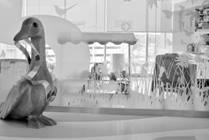
Condition
Duodenal Atresia
Duodenal atresia is a congenital condition where the duodenum is narrowed or blocked. The duodenum is the first part of the small bowel (intestine). This blockage keeps liquids and food from passing through the stomach into the rest of the intestine. The cause of duodenal atresia is not known.
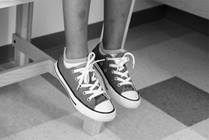
Condition
Non-Ossifying Fibromas
Non-ossifying fibromas (NOFs) are made of fibrous or “scar” tissue in the bone. They are not cancerous and they do not spread to other parts of the body or bone.

Condition
Anxiety and Worry
Anxiety is a normal emotion. It can cause feelings of fear, tension and worry. It can also cause physical changes in the body.

Condition
Iron Deficiency Anemia
The most common cause of anemia worldwide is iron deficiency. Iron is needed to form hemoglobin. Iron is mostly stored in the body in the hemoglobin. Iron deficiency anemia can be caused by diets low in iron, body changes, gastrointestinal tract abnormalities and blood loss.

Condition
Anxiety Disorders
Anxiety disorders are the most common type of mental health disorder in children. There are many types of anxiety disorders, each with its own distinct symptoms.

Condition
Type 1 Diabetes
Type 1 diabetes, formerly known as juvenile diabetes, is a chronic condition that occurs when your body makes little to no insulin. Insulin is a hormone that is made in the pancreas and keeps blood glucose (sugar) at a normal level.
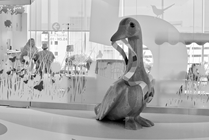
Condition
Voiding Dysfunction
If a child over the age of 4 has difficulties holding their urine (urinary incontinence) and physicians are unable to identify an anatomical or neurological cause, they may diagnose the child with voiding dysfunction.

Condition
Central Nervous System (CNS) Tumor
The central nervous system is made up of the brain and the spinal cord. This system is responsible for sending, receiving and processing information throughout your body, controlling how your body functions. When tumors grow in the central nervous system, they can cause significant symptoms.
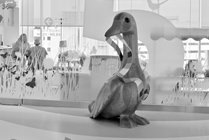
Condition
Gastroesophageal Reflux Disease (GERD) in Infants
In this Helping Hand™ document, we discuss Gastroesophageal Reflux Disease, also known as GERD, in infants. This document provides tips on feeding your child, medications, positioning and safe sleep to help you manage your infant's reflux. Call your child's doctor if they fail to gain weight.
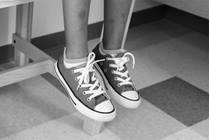
Condition
Herpes Simplex Virus
Herpes simplex virus (HSV) is a very contagious virus that causes infections. There are two types of HSV. One type (HSV-1) usually causes sores around the lips or inside the mouth that are sometimes called fever blisters or cold sores. The other type (HSV-2) usually causes sores on the genitals.

Condition
Intestinal Malrotation Surgery
In this Helping Hand™, we discuss malrotation of the intestines, which is when a baby’s intestines do not move or rotate into the right place.
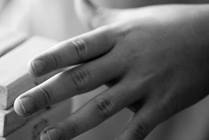
Condition
Menkes Disease
Menkes disease, also known as Menkes syndrome, is a disorder caused by a mutation of the ATP7A gene. This gene affects how the body transports copper and maintains copper levels. Menkes disease usually causes low copper levels in blood plasma, the liver and the brain. It occurs mostly in male infants.

Condition
Diabetes Ketoacidosis (DKA)
Diabetic ketoacidosis, also known as DKA, is a serious complication of diabetes. When cells do not have glucose to use for energy, the body starts to use fat for energy. Acids called ketones are made when fat is used for energy. If untreated, this leads to DKA and life-threatening problems.

Condition
Achondroplasia
Achondroplasia is the most common form of short-limb dwarfism. Individuals who have achondroplasia have short limbs but normal trunk height and head size with a prominent forehead. Children with achondroplasia can lead normal lives provided they receive appropriate care by knowledgeable providers.

Condition
Extreme Prematurity
A birth that occurs any time prior to 37 weeks of pregnancy is considered premature. Sometimes that baby is referred to as preterm, near-term or a preemie. The most extreme issues occur in babies born at less than 28 weeks.
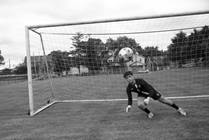
Condition
Biceps Tendonitis and Tenosynovitis (Distal)
Distal biceps tendonitis is pain at the front of the elbow and upper arm caused by inflammation (swelling) of the biceps tendon. Tenosynovitis is inflammation of the tendon sheath that surrounds the biceps tendon.

Condition
Vulva Abnormalities
To diagnose vulvar disorders and diseases, a doctor will take a complete medical history to find out about symptoms and how long they have been happening.
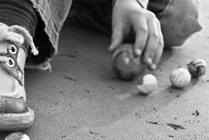
Condition
Lichen Striatus
Lichen striatus is a rash that appears as pink or lightly-colored, scaly, flat bumps. Over time, these bumps come together to form a line or band on the skin.

Condition
Emery-Dreifuss Muscular Dystrophy
Emery-Dreifuss muscular dystrophy is a rare form of MD that affects only males. Symptoms may begin in childhood or adolescence. The condition causes slowly progressive weakness in the muscles of the shoulders, upper arms, and lower legs and joint stiffness.
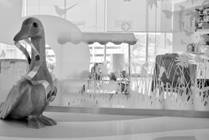
Condition
Micrognathia
Micrognathia is when the lower jaw is smaller than normal. In some cases, this can cause problems with feeding, breathing and sleeping.

Condition
Straddle Injury/Genital Trauma
A straddle injury (genital trauma) occurs when a female hits the vulva or perineum (external female genitalia) on an object and the force generated by the weight of her body causes an injury. This can occur during a fall or accident.

Condition
Facioscapulohumeral Muscular Dystrophy
Facioscapulohumeral muscular dystrophy, also known as Landouzy-Dejerine, causes severe weakness in muscles of the face, shoulders and back.

Condition
Sexually Transmitted Infections (STIs)
Sexually transmitted infections can be spread when a person is exposed to blood, skin, semen, vaginal fluids, or other bodily fluids that have a virus, bacteria, or parasite during sexual contact.

Condition
Spinal Cord Tumor
Spinal cord tumors are growths that develop within the spinal canal or the bones of the spine. They can cause pain, loss of sensation, and muscle weakness. Treatment options include surgery, radiation therapy, and chemotherapy.

Condition
Suicidal Behaviors
Suicidal thoughts and behaviors can affect children and teenagers. Most children and adolescents who attempt suicide show warning signs. It is vital that families are aware of these signs and discuss concerns, ideally prior to a life-threatening mental health crisis.

Condition
Growth Plate Injuries
The physis, or growth plate, is an area of growing bone near the ends of long bones. Bones grow longer from the tissue produced by the physis and then harden.
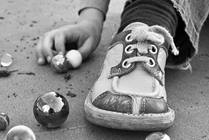
Condition
Hereditary Multiple Osteochondromas
Hereditary multiple osteochondromas (HMO) is a rare genetic disorder. Children develop non-cancerous (benign) bone tumors called osteochondromas. Knees, shoulders, ankles and wrists are the most common sites for osteochondromas.
Condition
Short Bowel Syndrome
Short bowel syndrome is exactly what the name sounds like - a condition in which the bowel is too short generally due to surgical resection.

Condition
Psychosis
Psychosis in children is rare but severe. Psychosis is a collection of significant symptoms that can impact thoughts, behaviors and emotions.
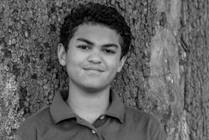
Condition
Gynecomastia
This Helping Hand™ is about gynecomastia and explains what it is, how it is treated and what the symptoms are.

Condition
Vaginal Discharge
It is normal for women to have some vaginal discharge. The presence of vaginal discharge alone does not mean there is an infection. Signs of an infection include vaginal itching, burning or irritation, and unpleasant odor.

Condition
Vaginal Yeast Infection
A vaginal yeast infection occurs when you have an overgrowth of candida or yeast in the vagina. The fungus candida albicans is the most common organism that causes vaginal yeast infections.

Condition
Tennis Elbow
Lateral epicondylitis (Tennis Elbow) is a painful inflammation of the bony bump on the outside of your elbow.
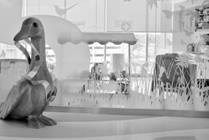
Condition
Twin Reversed Arterial Perfusion (TRAP) Sequence
Twin reversed arterial perfusion (TRAP) sequence is a rare condition that affects pregnancies with identical twins who share a placenta. TRAP occurs when one of the twins, called the acardiac twin, lacks a functioning heart and gets blood from the other twin, called the pump twin.

Condition
Jeune's Syndrome
Jeune's Syndrome is a form of congenital dwarfism causing children to have a deformity of their chest wall. Learn more about signs, symptoms, and treatment.

Condition
Cystic Fibrosis - Related Diabetes
Cystic fibrosis-related diabetes (CFRD) is a type of diabetes that affects children and adults with cystic fibrosis (CF). Diabetes is a common complication for patients with cystic fibrosis.
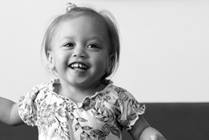
Condition
Tonsillitis
Tonsillitis refers to inflammation or infection of the tonsils. Treatment of tonsillitis typically requires a course of antibiotics.
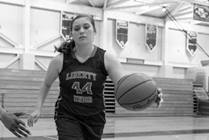
Condition
Scaphoid Fracture
The scaphoid is one of 8 carpal bones located in the wrist. A scaphoid fracture is a break of the scaphoid bone.
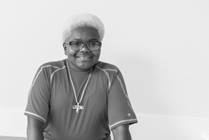
Condition
Nosebleeds
In this Helping Hand™, we discuss nosebleeds. Also known as epistaxis, nosebleeds occur when small and delicate blood vessels (capillaries) in the lining of the nose break and bleed. There are many things you can do to stop a nosebleed. If your child’s nosebleed does not stop, call your doctor.
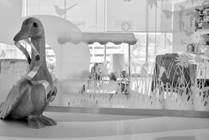
Condition
Bacterial Vaginosis (BV)
Bacterial vaginosis or BV is an infection of the vagina. BV is not a sexually transmitted disease. It is an overgrowth of specific anaerobic bacteria (bacteria that do not need oxygen to grow) in the vagina. Women with BV report a fishy-smelling discharge (fluid) that is white to gray in color.

Condition
Hydrocele
Hydrocele is a collection of clear or yellow fluid around the testicle within the scrotum. Many male newborns have small hydroceles present at birth, most of which will go away on their own within the first year and do not require surgery.
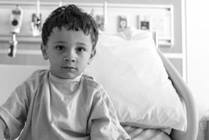
Condition
Bronchopulmonary Dysplasia
This Helping Hand™ covers bronchopulmonary dysplasia (BPD), which is a term used to describe long-term breathing problems for premature babies. It involves abnormal development of the lungs, and sometimes the lungs are scarred and inflamed.

Condition
Influenza
Influenza, also known as the flu, is an illness caused by a virus. A child who has the flu may have some or all of these symptoms: high fever, headache, dry cough, sore throat, runny or stuffy nose, muscle aches, tiredness, stomach pain and diarrhea. Antibiotic medicines will not help cure the flu.
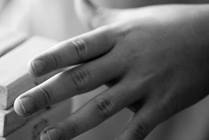
Condition
Hives
In this Helping Hand™ we will discuss the causes and treatment of hives, as well as how to prevent them and when to seek help from a doctor.

Condition
Sports Medicine: Kyphosis and Lordosis
Kyphosis and lordosis refer to the natural curves of the spine in the mid-back and low back. Sometimes these curves can be larger than normal which can lead to pain.

Condition
Pinworms: Treatment and Prevention
Pinworms are small white worms that live in the large intestine. They are about 1/2 inch long and as thin as a thread. They can sometimes be seen in and around the child's bowel movements. The adult female pinworm lays her eggs on the skin around the anus. This causes itching and scratching.
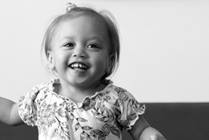
Condition
Pulmonary Stenosis
Pulmonary stenosis is a heart defect in children that makes it harder for blood to flow. It can be treated with surgery or catheterization.
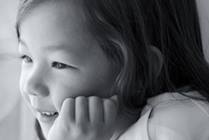
Condition
Embryonal Tumor with Multilayered Rosettes (ETMR)
If you are worried about your child’s symptoms or development, reach out to a physician. The sooner your child is diagnosed, the better the chances are of survival.
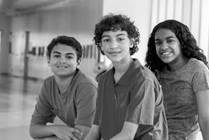
Condition
Lymphatic Disorders
Lymphatic disorders arise when the lymphatic system is disrupted either through congenital malformation, traumatic injury from a medical procedure, or a change in the lymphatic-circulatory balance. Lymphatic disorders may result in losses in nutritional, immune, electrolyte and clotting factors.

Condition
Bifid Uvula
A bifid uvula, also known as a cleft uvula, is a uvula that is split in two. A bifid uvula may be an isolated finding or it may be related to submucous cleft palate. In cases of isolated bifid uvula, and in cases of submucous cleft palate without hypernasality, no surgical intervention is needed.
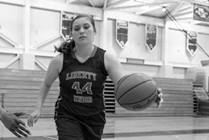
Condition
Sports Medicine: Anterior Ankle Impingement
Anterior ankle impingement is pain and pinching of bone, soft tissue or scar tissue at the front of the ankle. This can happen after a new or old injury.

Condition
Femoral Anteversion
Femoral anteversion is an inward turn of the thigh bone, which can cause the knees and toes to point in.

Condition
Protein Losing Enteropathy (PLE)
Protein losing enteropathy (PLE) explains the condition when the body loses important proteins because they are leaking into the intestines.

Condition
Ureteropelvic Junction Obstruction (UPJ Obstruction)
Ureteropelvic junction obstruction is a blockage between the ureter and an area in the kidneys called the pelvis.
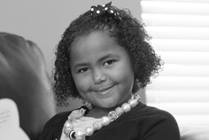
Condition
Alveolar Cleft
An alveolar cleft is a cleft of the upper gum line. It most often accompanies and cleft lip and/or cleft palate. Bone graft repair allows permanent teeth to descent into the cleft while providing stability to the upper jaw and support to the nose.
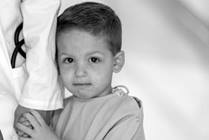
Condition
Upper GI Bleeding
Upper GI bleeding occurs when irritation and ulcers of the lining of the esophagus, stomach, or duodenum result in bleeding. When this occurs, the child will vomit bright red blood, or dark looking flecks or clots that look like “coffee grounds”.
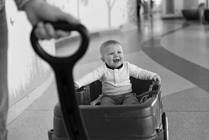
Condition
Colic
This Helping Hand™ covers colic, which is when a healthy baby cries more than 3 hours a day for 3 or more days in a week. If this happens 3 weeks in a row, your baby may have colic.

Condition
Velopharyngeal Dysfunction (VPD)
Velopharyngeal dysfunction (VPD) is the inadequate separation of the oral and nasal cavities during speech and/or swallowing. At Nationwide Children’s Hospital, our experts in the Velopharyngeal Dysfunction Program provide specialized treatment for patients with speech disorders resulting from VPD.

Condition
Phimosis
Phimosis is a condition of the male foreskin where the skin is tight and unable to retract back behind the head of the penis. This condition is completely normal and physiologic in most baby boys whose penis is otherwise without abnormalities.

Condition
Clubfoot
In this Helping Hand™ document, we discuss clubfoot, a foot disorder in which the foot turns inward and downward at birth and remains in this position. In some cases, clubfoot can be corrected without surgery.

Condition
Laryngomalacia
Laryngomalacia literally means “Soft Larynx”. It is caused by floppiness of the laryngeal tissues above the vocal cords (the supraglottic larynx).

Condition
Dysmenorrhea (Painful Menstruation)
A common reason patients experience painful menstruation, also known as dysmenorrhea, is because of inflammatory agents, called prostaglandins, which are released from the lining of the uterus during menstruation.

Condition
Tetralogy of Fallot (TOF)
Tetralogy of Fallot is a congenital heart defect that is made up of 4 problems and results in not enough blood flow to the lungs.

Condition
Pulmonary Atresia
Pulmonary atresia is a heart defect in children that affects blood flow to the lungs. It can be treated with surgery or catheterization

Condition
Rett Syndrome
Rett syndrome affects the way the brain develops. This rare condition causes children to lose language and motor skills starting around age 6 to 18 months.

Condition
Kidney Stones
Stones in the urinary tract form in the kidneys when small particles, which are usually dissolved in the urine, become oversaturated and begin to form small crystals. These small crystals can continue to grow into larger solid crystals, which resemble sand, gravel or small rocks.

Condition
Anemia: Iron Deficiency
This Helping Hand™ covers iron deficiency, which is a condition where the body lacks sufficient iron to produce hemoglobin, which can lead to anemia. Symptoms include fatigue, weakness, pale skin, and shortness of breath.
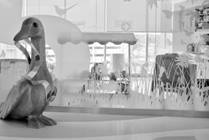
Condition
Omphalocele
An omphalocele is an abdominal wall defect that allows the intestine to remain outside the abdomen. An omphalocele can contain parts of the intestine, liver and other organs. The goal of surgery is to place the abdominal organs back into the baby’s body and repair the defect in the wall of the belly.

Condition
Autoimmune Hepatitis
Autoimmune hepatitis happens when something goes wrong with the body’s immune system. In autoimmune hepatitis, the immune system attacks normal liver cells. This causes damage that makes it hard for the liver to work properly.

Condition
Acne
In this Helping Hand™, we discuss the causes and treatment of acne. Acne is a skin condition that occurs when hair follicles become plugged with oil and dead skin cells. It causes whiteheads, blackheads or pimples.

Condition
Celiac Disease
Celiac disease is a chronic condition that results in damage to the lining of the small intestines. Symptoms are triggered by the ingestion of products that contain wheat, barley or rye proteins, collectively known as gluten.
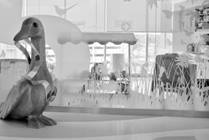
Condition
Bilateral Renal Agenesis
Bilateral renal agenesis (BRA) is a rare and life-limiting condition in which the baby’s kidneys never develop. BRA is usually diagnosed during pregnancy. Unfortunately, there currently is not a cure for bilateral renal agenesis. These babies usually only live for a few hours after birth.
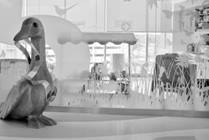
Condition
Abdominal / Duplication Cysts
Abdominal cyst is a general term used to describe a rare, congenital birth defect that causes an irregular mass of tissue to grow in a baby’s abdomen. Growths can appear anywhere along the gastrointestinal tract or reproductive organs like the ovaries. Surgery is the most common treatment for cysts.
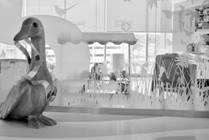
Condition
Congenital High Airway Obstruction Syndrome (CHAOS)
Congenital high airway obstruction syndrome, or CHAOS, is a very rare condition where the fetal airway is fully or partly blocked. CHAOS is usually found during a routine prenatal ultrasound. In some cases, fetal surgery may be done to remove the blockage. Sometimes CHAOS resolves on its own.

Condition
Conjunctivitis (Pink Eye)
Conjunctivitis, or pink eye, is an inflammation of the conjunctiva. The conjunctiva is a clear membrane that covers the white part of the eye and the inner part of the eyelids.

Condition
Physical Abuse
Physical abuse is any act that results in physical injury to a child or adolescent, even if the injury was unintentional.

Condition
Apnea
In this Helping Hand™ document, we discuss apnea, which is a pause in breathing that lasts 20 seconds or longer for full-term infants. There are many reasons why a baby may have periods of apnea including brain immaturity, neurological issues, heart disease, gastrointestinal issues and others.

Condition
Uterine Didelphys
Uterine didelphys is a disorder present before birth in which a female develops two uteruses instead of one. Treatment could be needed if symptoms occur such as unusual pressure or cramping pain before or during a menstrual period or an abnormally high amount of bleeding during a menstrual period.

Condition
Migraines
To be diagnosed with migraines, a child needs to have at least five headaches that meet certain criteria: pain that is moderate to severe, pain that is one-sided (unilateral) or on both sides of the head (bilateral), sensitivity to light and sound, and nausea that may or may not lead to vomiting.

Condition
Pilonidal Disease
This Helping Hand™ is about pilonidal disease, which is a common skin condition that happens between the buttocks.

Condition
Eczema (Atopic Dermatitis)
This Helping Hand™ is about eczema in children, which is a skin problem that causes dry, itchy, rough skin rashes.

Condition
Double-Inlet Left Ventricle
Double-inlet left ventricle (DILV) is a heart defect where both upper chambers send blood to one lower chamber, causing mixed blood flow to the body and lungs. Most babies with DILV will need many heart surgeries over their lifetime. Most surgeries are successful, but your child will need cardiology care for life.

Condition
Impaired Spleen Function
The spleen is an organ that helps prevent and control some infections. Asplenia is when you don’t have a spleen.

Condition
Allergy to Stinging Insects
In this Helping Hand™ document, we discuss local and systemic reactions to stinging insects. The most common stinging insects found in the Ohio area are honeybees, wasps, yellow jackets and hornets. Doctors often prescribe an automatic injector device such as an EpiPen® to treat severe reactions.

Condition
Food Allergy and Parenting
This Helping Hand™ offers advice on parenting a child with food allergies. You have watched your child’s food and surroundings from an early age. You have also worked hard to speak to others, such as family, friends, and your child’s school, about keeping them safe from their allergen(s).
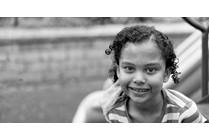
Condition
Tinea Pedis
This Helping Hand™ is about athlete's foot (tinea pedis) a common foot infection caused by a fungus.

Condition
Prepubertal Vaginal Bleeding
There are several different reasons why a pediatric patient may experience vaginal bleeding. It is important to notify your health care provider if you notice your child is having vaginal bleeding.
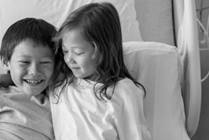
Condition
Atrioventricular Septal Defect (AVSD)
Atrioventricular septal defect (AVSD), also commonly known as endocardial cushion defect or atrioventricular canal defect (AVCD), is a heart condition where there are holes between the heart’s upper and lower chambers, and the valves controlling blood flow may not form correctly.
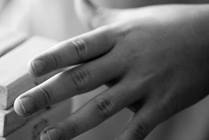
Condition
VACTERL Association
VACTERL association is a complex condition that affects up to seven areas of the body. It appears differently in everyone, but at least three areas of the body must be impacted for this diagnosis.
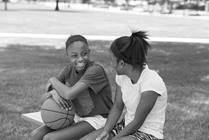
Condition
Menstrual Period Disorders
Menstrual periods can be very different for different people. What is “normal” for some may not be for others. Menstrual period disorders can mean your periods are not the same length or time each month or can mean your blood flow is heavier than usual.

Condition
Nasal Turbinate Hypertrophy
Turbinate hypertrophy, inferior turbinate hypertrophy, and nasal turbinate hypertrophy are all descriptions of a similar condition where the tissue on the lateral (outside) walls of the nose are too large, causing nasal obstruction.

Condition
Tongue Tie
Tongue tie, or ankyloglossia, is a condition in which your child’s tongue is tethered to the floor of the mouth by a band (lingual frenulum). While up to 10 percent of children can have some degree of tongue tie, not all children with tongue tie require intervention.
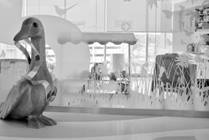
Condition
Sacrococcygeal Teratoma (SCT)
Sacrococcygeal teratoma (SCT) is a tumor that forms on a fetus’ tailbone, also called the coccyx. The tumors are usually not cancerous (benign) but can be life-threatening if not treated. SCT is rare, occurring in about 1 in 35,000-40,000 births. They are more common in males than females.

Condition
Turner Syndrome
Turner Syndrome is a rare genetic disorder that affects females. It is caused by a partial or complete loss of an X chromosome.
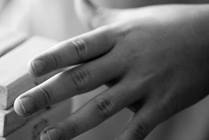
Condition
Allergy to Dust Mites
This Helping Hand™ covers allergy to dust mites. When a person who is sensitive to the dust mite breathes in these particles, they can cause sneezing, coughing, runny nose, congestion and itchy, watery eyes.

Condition
Hymen Variants
Hymen is a thin piece of tissue located at the opening of the vagina. The hymen needs to be open to allow menstrual blood and normal secretions to exit the vagina. Hymens come in different shapes including imperforate hymen, microperforate hymen, cribiform hymen and septate hymen.
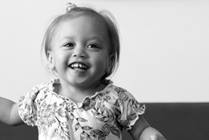
Condition
Feeding Disorders
Feeding disorders are characterized by extreme food selectivity by type, texture, brand, shape or color.
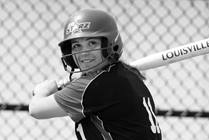
Condition
Sports Medicine: Herniated Disc
A herniated disc is a condition that affects the spine. A disc has a tough outside shell and jelly-like center. A herniated disc occurs when the jelly-like contents of the disc leak out.

Condition
Subglottic Stenosis
Subglottic stenosis is a narrowing of the airway in the part of the voice box below the vocal cords (glottis). There are two kinds of subglottic stenosis: congenital subglottic stenosis and acquired subglottic stenosis.
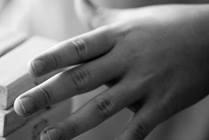
Condition
Cloacal Malformation
Cloacal malformation, sometimes called persistent cloaca, is found in female children where the rectum, vagina and urethra are fused together, creating a single common channel. In developing fetuses, these openings are joined in a sac known as the cloaca. At birth, these openings are normally separate.
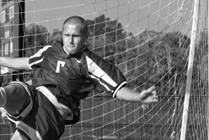
Condition
Sports Medicine: Adductor Muscle Strain
Adductors are a group of muscles that go from the pelvic bone down to the inner thigh and knee. An adductor strain is an injury to one of these muscles.
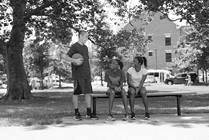
Condition
Avulsion Fractures of the Ischial Tuberosity of the Pelvis
Avulsion fractures happen when a small piece of bone is pulled away by a muscle or tendon. The ischial tuberosity, located in the buttocks, is where the hamstring tendons attach to the pelvis. These fractures often occur in teenagers.

Condition
Pelvic Pain
Pelvic pain is considered pain in the lowest part of your abdomen. Acute pelvic pain is pain that is present for less than three months. Chronic pelvic pain is persistent and presents for six months or greater.

Condition
Noisy Breathing (Stertor, Stridor or Wheezing)
Noisy breathing is common, especially in children. and can be a sign of many different conditions. Noisy breathing is typically caused by a partial blockage or narrowing at some point in the airways. Types of noisy breathing include low-pitched, stridor and wheezing.
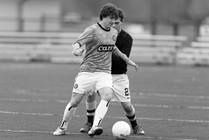
Condition
Sports Medicine: Ankle Dislocation or Subluxation
The ankle joint is made up of two lower leg bones and a foot bone. A dislocation is an injury to a joint causing the bones to no longer meet together correctly. In the ankle, this can occur when the talus no longer is in position with the tibia and fibula. A subluxation is a partial dislocation.

Condition
Amenorrhea
Amenorrhea is when a girl or woman does not have her period. Primary amenorrhea is when periods have not started by age 16. Hormone levels and anatomical problems can cause amenorrhea.
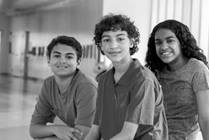
Condition
Otorrhea
Otorrhea is the medical term for ear drainage. In order for there to be drainage from the middle ear into the ear canal, there must be a connection present.
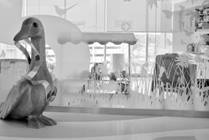
Condition
Measles
Measles, also known as rubeola, is an infection caused by a virus. It is very contagious. It can be very serious in young children, adults over 20, pregnant women and people with a weakened immune system.

Condition
Hypoplastic Left Heart Syndrome
Hypoplastic left heart syndrome (HLHS) is a congenital heart defect where most of the structures on the left side of the heart are small and underdeveloped. The Hybrid approach, developed by surgeons at Nationwide Children's Hospital, is an alternative to Norwood open heart surgery for HLHS.

Condition
Factor V Leiden
Factor V (factor five) is a protein involved in the blood clotting process. Children born with Factor V Leiden produce a mutated form of Factor V that does not respond well to activated Protein C.
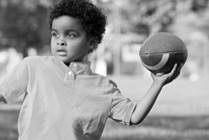
Condition
Vitamin D Deficiency
This Helping Hand™ covers vitamin D deficiency. Vitamin D keeps our bodies healthy and builds strong bones. It does this by helping the body absorb calcium and phosphorous from foods and supplements. If your child has a vitamin D deficiency it means they do not have enough vitamin D in their body.
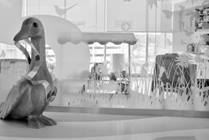
Condition
Dandy-Walker Syndrome
Dandy-Walker Syndrome (DWS) is a congenital condition where the cerebellum does not develop normally. The cerebellum is an area at the back of the brain that controls movement and balance. With DWS, parts of the cerebellum may never develop, may be very small, or may become filled with fluid.
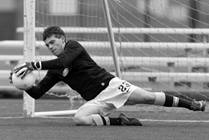
Condition
Chronic Ankle Instability
Chronic ankle instability happens when your ankle keeps giving way, especially after many sprains. This makes it hard to walk or play sports without your ankle feeling weak or wobbly. It can happen even when you’re just standing still.

Condition
Diabetes: MODY
MODY is the name given to a collection of different types of inherited forms of diabetes that usually develop in adolescence or early adulthood. MODY stands for “Maturity-onset diabetes of the young” and was given that name because it acted like an adult type of diabetes but was found in young people.
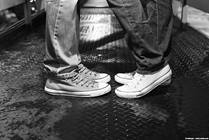
Condition
Human Papillomavirus (HPV)
Human papillomavirus (HPV) is the most common sexually transmitted infection (STI). Anyone who is sexually active is at risk of getting HPV.

Condition
Psoriasis
Psoriasis (sore-EYE-uh-sis) is a common skin problem that looks like pink or red areas of skin topped with white or silvery scaly patches.

Condition
Bulimia Nervosa
Bulimia nervosa is a type of eating disorder in which a person regularly eats excessive amounts of food and then attempts to eliminate the consequences of overeating by vomiting, taking laxatives or diuretics, fasting, or exercising excessively.

Condition
Hydroureter
Hydroureter is when the ureter gets bigger than normal due to a backup of urine.

Condition
Spleen Injury
This Helping Hand™ covers spleen injuries. Due to where the spleen is in the body and its size, it can get injured easily. Learn what to expect if your child has a spleen injury.

Condition
Lateral Collateral Ligament Sprain
The lateral collateral ligament (LCL) is one of the 4 major ligaments of the knee. An injury to the LCL alone is not common and often occurs with knee injuries.

Condition
Allergic Rhinitis
Allergic rhinitis is a common condition caused by an abnormal reaction of the body’s immune system to various allergens. In this condition, the nasal lining can become very inflamed and swollen from the over-response of the body. Common allergens include dust, grass, pollen, mold, trees and dander.

Condition
Psychogenic Non-Epileptic Events
This Helping Hand™ reviews what psychogenic non-epileptic events (PNEE) are, as well as signs, diagnosis, and treatment options.

Condition
D-Transposition of the Great Vessels
D-Transposition of the great vessels (d-TGA) is a congenital heart defect where the aorta and pulmonary artery are switched from their normal positions. Shortly after birth, babies with d-TGA are blue because not enough oxygen is getting to the body.

Condition
Endometriosis
Endometriosis is an inflammatory and estrogen-dependent condition in which the menstrual tissue is found outside the uterus, within the pelvis. Pain due to endometriosis is different from normal menstrual pain. Girls who have a family history of endometriosis have an increased chance of developing it.

Condition
Swallowing Disorders
A swallowing disorder can result in aspiration or food “going down the wrong pipe.” Aspiration can place a child at a higher risk for respiratory/pulmonary issues.

Condition
Bicuspid Aortic Valve
Bicuspid aortic valve disease (BAV) is an irregularity in the heart where there are only two leaflets on a valve, instead of the normal three.

Condition
Hemophilia Carrier
A hemophilia carrier is a female who has the gene that causes hemophilia A or hemophilia B deficiency.

Condition
Knock Knees (Genu Valgum)
Genu valgum, also known as knock knees, is a common lower leg abnormality that is usually seen in the toddler, preschool and early school-age children. In genu valgum, the lower extremities turn inward, causing the appearance of the knees to be touching while the ankles remain apart.
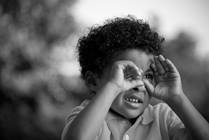
Condition
Prune Belly Syndrome
Prune belly syndrome (PBS) is a rare condition that affects about 1 in every 50,000 children. Children are born with it. The condition affects belly (abdominal) muscles, bladder and urinary tract, as well as testicles in males. PBS is often found during pregnancy.

Condition
Vaginal Atresia
Vaginal atresia is a condition a child is born with. The vagina might not be formed completely, meaning it is closed or absent. Treatment includes dilators or surgery.

Condition
Lordosis
Lordosis is the natural curve of the lower back (lumbar) area of the spine. There are five primary types of lordosis: postural lordosis, congenital/traumatic lordosis, post-surgical laminectomy hyperlordosis, neuromuscular lordosis and lordosis secondary to hip flexion contracture.

Condition
Congenital Hypothyroidism
This Helping Hand™ is about congenital hypothyroidism, which is when a baby is born without enough thyroid hormone. Learn more about symptoms and treatment for congenital hypothyroidism here.

Condition
Tympanic Membrane Perforation
Tympanic membrane perforation can be suspected with a history of ear trauma, ear tubes, frequent ear drainage or hearing loss.
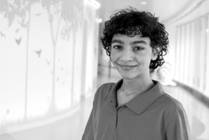
Condition
Neurofibromatosis (NF1, NF2 & SWN)
Neurofibromatosis includes three distinct health conditions. These genetic disorders case tumors in the nervous system, including the brain, spinal cord and nerves. While most tumors are non-aggressive, they may still require treatment.
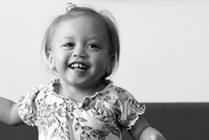
Condition
Hemangioma and Vascular Malformations
The treatment of a hemangioma is usually observation. Some hemangiomas can cause problems if they bleed or press on important nearby structures, such as the eye or the upper airway. Venous malformations, lymphatic malformations and arteriovenous malformations require a multidisciplinary approach.

Condition
Bladder Exstrophy
Children born with bladder exstrophy need lifelong management. The urology team at Nationwide Children's is here to help your family with a care plan.

Condition
High-Grade Gliomas
High-grade gliomas are fast-growing cancers that form in the brain or spinal cord. Surgery, radiation, and targeted therapies can help. High-grade gliomas are more aggressive and can grow quickly. They are the second most common type of malignant brain tumor in children.
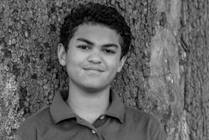
Condition
Vocal Fold Nodules
Vocal fold or vocal cord nodules are small, non-cancerous growths on your child’s vocal cords. They are often caused by voice abuse. Over time, your child’s repeated misuse of the vocal folds results in soft, swollen spots on each vocal fold.

Condition
High Cholesterol
Cholesterol is a fatty yellow substance. It is made by your liver from the fats, carbohydrates and proteins in the food you eat. Learn more from Nationwide Children's.
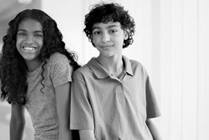
Condition
Attention Deficit Hyperactivity Disorder - ADHD
Attention Deficit Hyperactivity Disorder (ADHD) is a common behavioral disorder. It affects about ten percent of school-age children. Boys are more likely than girls to be diagnosed with it. Young people with ADHD have an impulsive nature that is difficult for them to control.
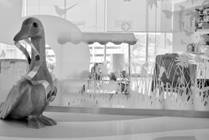
Condition
Lower Urinary Tract Outlet Obstruction (LUTO)
Lower urinary tract outlet obstruction is when pee is partly or completely blocked from leaving the body at the lower urinary tract. LUTO occurs in about 1 in every 5,000 pregnancies. It is more common in males.

Condition
Enlarged Tonsils
The function of the tonsils is to help identify and fight infections caused by viruses or bacteria. They can cause problems if they are enlarged or become infected.
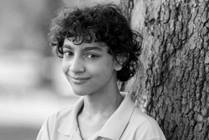
Condition
Auditory Processing Disorder (APD)
Auditory Processing Disorder (APD), also referred to as Central Auditory Processing Disorder (CAPD), is a disorder of the auditory (hearing) system that causes a disruption in the way that an individual’s brain understands what they are hearing. It is not a form of hearing loss.

Condition
Chronic Intestinal Pseudo-Obstruction
In CIP the intestines react as if there is a true obstruction or blockage. When tests are performed, no physical evidence of blockage is found.

Condition
Meniscus Tears
Meniscus tears are common injuries. The meniscus is the rubbery cartilage disc between the tibia and femur. It acts as a shock absorber in the joint. The meniscus helps provide stability in the knee.

Condition
Snapping Hip Syndrome
Snapping hip syndrome is a condition in which you may sense something catching or hear a popping sound or click in your hip when your hip joint moves. If you put your hand over the hip area, you might feel or even see the snap happen when walking, running, bending or getting up from a sitting position.

Condition
Bipolar Disorder
Bipolar disorder, formerly known as manic-depression, is a chronic mental illness that causes extreme mood swings from high to low.

Condition
Syphilis
Syphilis (SIF-i-lis) is a sexually transmitted infection (STI). Anyone who is sexually active has a chance of getting syphilis.

Condition
Vaginal Anomalies
Vaginal anomalies are disorders that involve abnormally formed or absent vaginas. These include: vaginal agenesis, imperforate hymen, septate hymen, transverse vaginal septum and transverse vaginal septum. These occur in about 5% of females with an anorectal malformation/imperforate anus.

Condition
Enuresis (Bedwetting)
Enuresis is the medical term for wetting the bed. It means a child urinates without meaning to. Treatment usually means helping a child to form habits that will allow him to control his need to urinate.
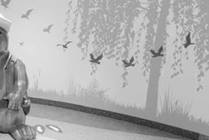
Condition
Croup
Croup is an illness that is usually caused by a virus. The tissues of the windpipe (trachea) and voice box (larynx) become swollen, which makes it harder for air to get into the lungs. Croup can cause a barky cough or hoarse voice. You may also hear a high-pitched squeaking sound called stridor.

Condition
Recurrent Respiratory Papillomatosis (RRP)
RRP is caused by the Human Papilloma Virus (HPV), which is a highly prevalent virus.

Condition
Ovarian Neoplasm
This Helping Hand™ highlights ovarian neoplasm, which is an abnormal growth of cells in the ovary. It can be benign or malignant. Symptoms include abdominal bloating, weight loss, and fatigue. Treatment usually involves surgery and chemotherapy.
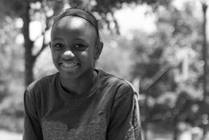
Condition
Multicystic Dysplastic Kidney
Multicystic dysplastic kidney is a common condition that occurs when one kidney does not develop correctly as it is forming in the womb. It is possible to end up with a non-functioning kidney full of cysts and scar tissue. The remaining kidney is usually able to take over all kidney function.

Condition
Mayer-Rokitansky-Küster-Hauser Syndrome
Mayer-Rokitansky-Küster-Hauser Syndrome (MRKH) is a rare condition that affects girls and women. It means they are born without a fully developed uterus or vagina.
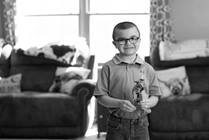
Condition
Duchenne Muscular Dystrophy (DMD)
Duchenne muscular dystrophy (DMD) is a rare condition defined by worsening muscle weakness and damage. It is the most common inherited neuromuscular disorder that affects all races and ethnicities. DMD only affects males and children with DMD may lose the ability to walk as early as 7 years of age.

Condition
Hydronephrosis
Hydronephrosis is a radiology term for swelling or fluid in the kidney. Hydronephrosis can be a sign of other kidney or bladder problems or developmental issues

Condition
Breast Asymmetry
Breast asymmetry in teenage females is common. In certain situations, the asymmetry may be significant and may lead to decreased body image, and difficulty finding clothes that fit. Treatment may include surgery. The type of surgery varies based on patient wishes and surgeon assessment.

Condition
Macromastia
Macromastia refers to enlarged breasts in females. This condition may cause back and neck pain, as well as rashes and limitations with daily activities. In those situations, breast reduction surgery may be beneficial.

Condition
Labial Hypertrophy
Larger-appearing labia minora, known as labial hypertrophy, may be completely normal. Labia vary in appearance with a wide range of normal regarding the size, shape and color. The majority of patients who have concerns about labial hypertrophy have normal labia.

Condition
Obstructed Mullerian Duct Anomalies
Obstructed mullerian duct anomalies are defects in the development of the reproductive system that are present in a female baby before birth.

Condition
Batten Disease
Batten Disease, also known as Spielmeyer-Vogt-Sjogren-Batten disease, is the most common form of a group of disorders called neuronal ceroid lipofuscinoses (or NCLs). Although Batten disease is usually regarded as the juvenile form of NCL, it has become the term which encompasses all forms of NCL.

Condition
Sialorrhea (Drooling)
Sialorrhea, also known as hypersalivation or drooling, means excessive saliva flow. Anterior sialorrhea is when patients have forward spillage of saliva from their mouths onto their faces and clothes. Posterior sialorrhea is when patients have spillage of saliva from their mouths down their airways.

Condition
Bone Marrow: Transplant Chronic Graft-Versus-Host-Disease
This Helping Hand™ explains how after someone has a bone marrow transplant, the donated bone marrow or stem cells can attack healthy tissue in a patient’s body.

Condition
Acute Pancreatitis
This Helping Hand™ explains the signs, causes, and treatments for acute pancreatitis—a sudden inflammation of the pancreas—with expert guidance from the care team at Nationwide Children’s Hospital.

Condition
Langerhan Cell Histiocytosis (LCH)
Langerhans Cell Histiocytosis (LCH) is among a rare and diverse group of disorders affecting primarily children. LCH was previously known as Histiocytosis-X, with the terms eosinophilic granuloma, Hand-Schuller-Christian disease, and Letterer-Siwe disease applied to various forms of the disease.
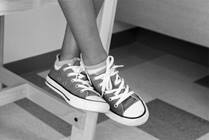
Condition
Stress Fracture
A fracture is a broken bone. A stress fracture is a complete or incomplete break in a bone. It is caused by repetitive activity.

Condition
Osteosarcoma
Osteosarcoma is the most common form of bone cancer in young people under age 20. Tumors are lumps or masses and usually affects the long bones near the knee or the shoulder.

Condition
Acanthosis Nigricans
This Helping Hand™ discusses acanthosis nigricans (AN), which is a dark patch that appears on a child's neck, armpit, under the breast or a skin crease. It is usually a sign that the body is making extra insulin that it cannot use well.
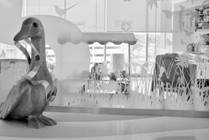
Condition
Pierre Robin Sequence
Pierre Robin Sequence is a condition that affects a baby’s mouth. It usually involves a cleft palate and a small lower jaw. This can impact breathing and feeding.

Condition
Vaginal Stenosis
Vaginal stenosis is a condition where the vagina becomes narrower and shorter. It can make it hurt to have sex or use tampons.
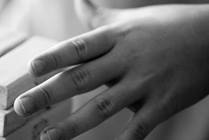
Condition
Warts
Warts are small, rough bumps that grow on the skin. They are caused by a virus and can spread from person to person. Learn how to prevent and treat them.
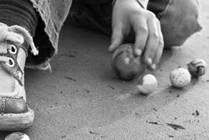
Condition
Gynecomastia
Gynecomastia refers to enlarged breasts in males. This condition is common in teenagers and often resolves on its own. However, if it persists for longer than 12 months, it may benefit from breast surgery.
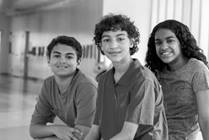
Condition
Neuroblastoma
Neuroblastoma is a rare cancer that develops from immature nerve cells. It most commonly arises in and around the adrenal glands, but can also develop in other areas of the body.

Condition
Ventricular Septal Defect (VSD)
A ventricular septal defect (VSD) is a hole in the heart. It changes blood flow, making the heart work harder. It can be treated with surgery or catheterization.

Condition
Headaches in Children
Headaches are common in children and teens. There are many types of headaches. Each type has their own treatment.
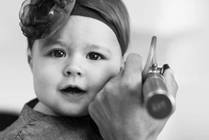
Condition
Ependymoma
Ependymomas are a type of a tumor that form in the brain or spinal cord (central nervous system) as a result of abnormal growth of ependymal cells.

Condition
Hydrocephalus
Hydrocephalus occurs when too much fluid builds up inside the spaces around the brain. This fluid, called cerebrospinal fluid (CSF), surrounds and cushions the brain and spinal cord. Hydrocephalus can be caused by a blockage in the flow or reabsorption of CSF, causing extra fluid to build up.
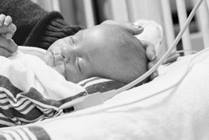
Condition
Pyloric Stenosis
Pyloric stenosis is a problem that affects babies between birth and 6 months of age. In pyloric stenosis, the muscles in the lower part of the stomach enlarge, narrowing the opening of the pylorus and eventually preventing food from moving from the stomach to the intestine.

Condition
Double Outlet Right Ventricle (DORV)
Double outlet right ventricle (DORV) is a congenital heart defect where the two great arteries are both attached to the right ventricle. In DORV, the normally separated oxygen-rich arterial blood and oxygen-poor venous blood is mixed prior to leaving the heart.
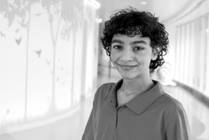
Condition
Aneurysmal Bone Cyst
Aneurysmal bone cysts (ABCs) occur more commonly in teens. The cysts are hollow and filled with blood. The tumors are not cancerous, but they damage bone and can affect surrounding tissue.

Condition
Graves' Disease
This Helping Hand™ explains the causes, signs and symptoms, and treatment for Graves' disease.
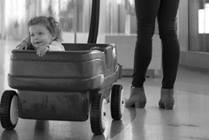
Condition
Neuromuscular Disorders
Patients benefit from coordinated care from specialists, all with expertise in pediatric neuromuscular disorders.

Condition
Slipped Capital Femoral Epiphysis
Slipped Capital Femoral Epiphysis (SCFE) is defined as the femoral neck and femoral shaft (top portions of the femur) moving either posteriorly (back), anteriorly (forward) or laterally (to the side) away from the femoral epiphysis and acetabulum (the ball portion of the femur). A SCFE can be either unilateral (one side) or bilateral (both sides).

Condition
Vertigo
Vertigo is the medical word for the feeling of spinning. Your child may feel like the world is moving, but there is no movement. These feelings come and go.
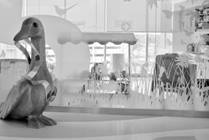
Condition
Agenesis of the Corpus Callosum
Agenesis of the corpus callosum (ACC) is a rare, congenital brain defect where a structure called the corpus callosum does not develop normally. The corpus callosum is a band of tissue connecting the left and right sides of the brain. The severity of the symptoms due to ACC is highly variable.

Condition
Gonorrhea
Gonorrhea is a sexually transmitted infection (STI) caused by the germ Neisseria gonorrhoeae. Anyone that is sexually active is at risk of getting gonorrhea. Those who have had more than one sexual partner are at higher risk of getting infected.

Condition
Active Tuberculosis Disease
In this Helping Hand™, we discuss Tuberculosis (TB). Active TB disease is contagious. It is most often spread through the air. The standard of care for treatment of active TB is daily administration of medicines from health department nurses.

Condition
Renal Failure in Children
Renal failure refers to temporary or permanent damage to the kidneys that results in loss of normal kidney function. There are two different types of renal failure—acute and chronic.

Condition
Sports Medicine: Anterior Tibialis Tendonitis
Anterior tibialis tendonitis is an injury of the anterior tibialis tendon in the front of the ankle where it meets the foot. The tendon is important in pulling the foot up (dorsiflexion), lifting the foot off the ground while running, and in turning the foot inward (inversion).

Condition
Polyps in the Digestive Tract
A polyp is an outgrowth of tissue that can extend out into the empty space within the stomach, small intestine, or colon. Colon polyps can be seen in healthy children. But when present in greater numbers, keep recurring or have bothersome features, other medical conditions that can be associated with lifetime risk should be considered. Polyps can generally be divided into two groups based on structure or appearance: hamartomas and adenomas.
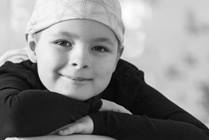
Condition
Lymphoma
Lymphoma is cancer which arises in the lymph system, the body’s circulatory network for filtering out impurities. There are two broad varieties, Hodgkin’s disease, and Non-Hodgkin’s lymphoma.

Condition
High Blood Pressure
High blood pressure, also known as hypertension, means that there is higher than normal pressure inside the arteries either during systole (when the heart contracts and pumps blood through the body), or during diastole (when the heart relaxes and fills with blood).

Condition
Eosinophilic Esophagitis (EoE)
Eosinophilic esophagitis is a condition in which large numbers of eosinophils, a white blood cell, build up inside the esophagus and cause inflammation.

Condition
Ganglion Cysts
A ganglion cyst is a fluid-filled lump under the skin, often over a joint or in a tendon in the hand or wrist. If the cyst appears on top of the wrist, it is called a dorsal wrist ganglion cyst. A cyst on the palm side of the wrist is a volar wrist ganglion cyst. These cysts are usually harmless.

Condition
Pyelectasis and Pelviectasis
Pyelectasis, or pelviectasis, is when urine gathers in the center of the kidney, called the pelvis. This makes the kidney larger than normal. This condition can affect one or both kidneys.

Condition
Adnexal Torsion
Adnexa is a term to describe the fallopian tubes and ovaries. Torsion is when the adnexa twist inside the pelvis. Adnexal torsion requires emergency surgery to untwist the adnexa.

Condition
Obsessive Compulsive Disorder
Obsessive compulsive disorder (OCD) is a common mental disorder in which “obsessions” and “compulsions” cause extreme anxiety and daily life disruptions.

Condition
Avulsion Fracture of the Iliac Crest
Avulsion fractures occur when a small piece of bone is separated from the main bone due to the pull of the muscle and tendon attached to it.

Condition
Tinea Versicolor
Tinea versicolor (TIN ee uh VUHR sih kuhl er) is a common rash caused by the overgrowth of microscopic yeast on the skin's surface. The rash looks like small, scaly spots.

Condition
Ventriculomegaly
Ventriculomegaly is a condition in which the brain ventricles are enlarged due to build-up of cerebrospinal fluid (CSF), a fluid that protects the brain and spinal cord. The severity of ventriculomegaly depends on how enlarged the brain is. In some cases, fluid keeps building up, causing hydrocephalus.

Condition
Liver Disease
Liver disease occurs in children for a variety of reasons. Babies may have problems with inherited disease, despite having healthy parents. Congenital problems where the bile ducts don’t develop normally may also cause problems in babies. Infections may also lead to the development of liver disease.

Condition
Neonatal Diabetes
Neonatal diabetes mellitus is a rare form of diabetes that occurs within the first 6 months of life.

Condition
Genital Warts
The Human Papilloma Virus (HPV) commonly causes genital warts. In females, these warts can occur around the vagina, on the cervix or around the rectum. Some strains of HPV can cause different types of cancer, however, most do not.

Condition
Lymphatic Malformation
A lymphatic malformation is the result of abnormal formation and development during fetal development of the otherwise normal lymphatic vessels in the body. This is usually in one area of the body: neck, chest, abdomen and extremities.

Condition
Tricuspid Atresia
Tricuspid atresia, also sometimes called hypoplastic right heart, is a heart defect where the valve between the heart’s right atrium and right ventricle doesn’t form. Most babies with tricuspid atresia will need many heart surgeries over their lifetime.
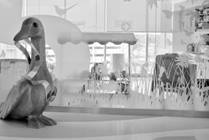
Condition
Encephalocele
Encephalocele is a rare congenital condition where the neural tube does not close and causes a sac-like bulge with brain tissue and spinal fluid that pokes through the skull. Encephalocele is often found during a prenatal ultrasound. Treatment depends on the location of the encephalocele on the skull.
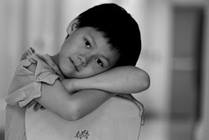
Condition
Disruptive Behavior Disorders (DBD)
Children with disruptive behavior disorders (DBD) show ongoing patterns of uncooperative and defiant behavior. The most common types of these disorders include disruptive behavior disorder not otherwise specified (DBD NOS), oppositional defiant disorder (ODD) and conduct disorder (CD).

Condition
Hashimoto's Thyroiditis
This Helping Hand™ explains the causes, signs and symptoms, and treatment for Hashimoto’s Thyroiditis.

Condition
Von Willebrand Disease
Von Willebrand Disease is caused by low amounts or structural abnormalities in a protein called Von Willebrand Factor. This results in prolonged clotting and easy bleeding and bruising.
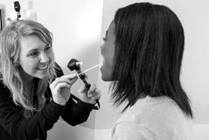
Condition
Tracheomalacia (Primary and Secondary)
Tracheomalacia is characterized by collapse of the walls of the windpipe (trachea). If the collapse is due to weakness of the cartilage in the tracheal wall, it is called primary tracheomalacia. If it's due to compression by a structure outside of the windpipe, it is called secondary tracheomalacia.

Condition
Fifth Disease (Erythema Infectiosum)
Fifth disease is a mild illness caused by a virus. Symptoms include a blotchy rash that begins on the cheeks and spreads to the arms, legs and torso.

Condition
Polycystic Ovary Syndrome (PCOS)
This Helping Hand™ about polycystic ovary syndrome (PCOS) explains how cysts on the ovaries can affect hormone balance, periods, and more.

Condition
Sports Medicine: Apophysitis of the 5th Metatarsal Iselin’s Disease
Iselin’s disease is pain and swelling of the growth plate (apophysis) of the 5th metatarsal.
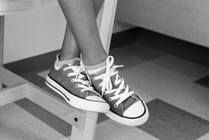
Condition
Vulvovaginitis
Vulvovaginitis is inflammation and irritation of the genital area. This may occur in females of any age, but it most often occurs in girls who have not started puberty.
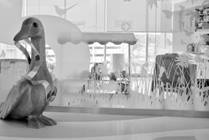
Condition
Anencephaly
Anencephaly is a condition present at birth that affects the formation of the brain and the skull bones that surround the head. Anencephaly results in minimal development of the brain. Often, the brain lacks part or all of the cerebrum. There is no cure or standard medical treatment for anencephaly.

Condition
Varicoceles
A varicocele is a mass of swollen blood vessels in the spermatic cord – the structure in the scrotum that connects the testicles to the body. Varicoceles are generally harmless and painless and do not require treatment. Physicians will recommend surgery if it appears the varicocele will impact testicle growth and future fertility.

Condition
Newborn Clavicle Fractures
Clavicle (collar bone) fractures are the most common injury sustained by newborns during birth. Factors that may increase the risk for a clavicle fracture include the newborn being large in size, the newborn’s shoulder getting stuck during delivery, or the use of tools to assist with the delivery.

Condition
Becker Muscular Dystrophy
Becker muscular dystrophy is the same basic disease as Duchenne muscular dystrophy, except it is less common and the symptoms are milder and slower to progress. It only affects males. Once symptoms begin, they follow a slower, but similar, course to that of Duchenne muscular dystrophy.
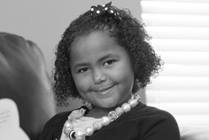
Condition
Transposition of the Great Arteries (TGA)
Transposition of the Great Arteries is a heart condition where arteries switch places and oxygenated blood goes back to lungs, not body. It can be treated with surgery and catheterization.

Condition
Anorectal Malformations or Imperforate Anus
Babies born with imperforate anus or anorectal malformation have a condition where the anal opening (where solid waste leaves the body) and rectum do not develop properly.

Condition
Brain Tumors
Brain tumors are the most common solid tumors in children. Primary brain tumors start in the brain and usually do not spread outside the brain tissue.

Condition
Jaundice in Children
Jaundice is a common condition in newborns that occurs when a yellow pigment (bilirubin) cannot be removed from the body fast enough and levels in the blood become too high. The buildup of bilirubin causes the skin and the white part of the eyes to appear yellow. Most cases clear without treatment.
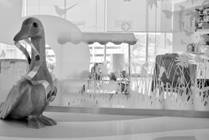
Condition
Nursemaid's Elbow
This Helping Hand™ explains what Nursemaid's elbow is and talks about how to prevent it.

Condition
Bacterial Vaginosis
Bacterial vaginosis is an infection of the vagina. Females of any age can have it and you do not have to be sexually active to get bacterial vaginosis.

Condition
Interrupted Aortic Arch (IAA)
Interrupted aortic arch is a heart condition where the aorta doesn't form completely. This affects blood flow and will require open heart surgery to treat it.

Condition
Low-Grade Gliomas
Low-grade gliomas are a type of brain tumor that grow slowly and are less aggressive than high-grade gliomas. They can cause seizures, headaches, and other symptoms. Treatment options include surgery, radiation therapy, and chemotherapy.

Condition
Medulloblastoma
Medulloblastomas are tumors that develop in the brain, most commonly in a region called the cerebellum. The cerebellum is located next to the brainstem and controls coordination, balance and other motor skills.
Condition
Eczema
Eczema is a chronic dry, itchy skin condition that often runs in families. Eczema is not contagious. Eczema often affects the insides of elbows, backs of knees, and the face.

Condition
Thrush and Yeast Infections
Thrush is an infection caused by a fungus called candida. Thrush can affect a child's mouth or diaper area. Oral thrush begins as flat white spots and come together to form patches. These spots are often mistaken for "milk patches." Candida in the diaper area can cause a red rash with tiny blisters.
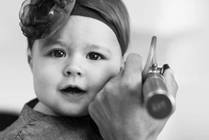
Condition
Paradoxical Vocal Cord Dysfunction (PVCD)
With Paradoxical Vocal Cord Dysfunction (PVCD), the vocal cords close together, or constrict, when a person inhales, leaving only a small opening for air to flow into the windpipe.

Condition
Astrocytoma (aka Glioma)
Astrocytoma is a type of tumor that can grow in the brain or spinal cord. It can be treated with surgery, radiation therapy, or other treatments depending on the type of tumor.

Condition
Giant Neck Mass
A giant neck mass is an abnormal growth of the neck. There are two different types of masses including cervical teratomas and lymphatic malformations. The cause of it is unknown, but it can be treated.
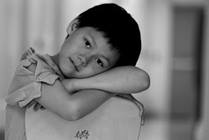
Condition
Atrial Septal Defect
Atrial septal defects (ASD) are a congenital heart defect characterized by a hole in the wall (septum) that divides the upper chambers (atria) of the heart.

Condition
Congenital Melanocytic Nevi (CMN)
Moles present from birth, or that develop within the first few months after birth, are called congenital melanocytic nevi (CMN). They are fairly common and, in most cases, they do not cause health problems. However, they can carry risks.

Condition
Bladder Outlet Obstruction
Bladder outlet obstruction, also known as lower urinary tract obstruction (LUTO), is a rare birth defect characterized by a partial or complete blockage in the urethra. There are several types of bladder outlet obstruction, including urethral atresia, posterior urethral valves, and triad syndrome.

Condition
Asperger's Syndrome
Asperger’s Syndrome, a form of Autism Spectrum Disorder, is a developmental disorder. Young people with Asperger’s Syndrome have a difficult time relating to others socially and their behavior and thinking patterns can be rigid and repetitive. They also may have trouble understanding body language.

Condition
Gastroschisis
When the muscles and skin fail to form normally in the abdominal wall, this results in an abdominal wall defect. Gastroschisis is the most common of the abdominal wall defects. Babies born with gastroschisis have a hole in the abdominal wall.

Condition
Birthmarks
More than 80 percent of babies have some type of birthmark. Most birthmarks are harmless and require no treatment. Vascular birthmarks include macular stains, hemangiomas and port wine stains. Pigmented birthmarks include congenital melanocytic nevi (moles), dermal melanosis and café-au-lait spots.

Condition
Achalasia
Achalasia happens when there are problems with the nerve cells in the muscles of the esophagus.
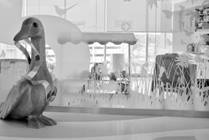
Condition
Hand, Foot and Mouth Disease
Hand, foot and mouth Disease (HFMD) is a common illness caused by a virus. Early symptoms of HFMD are much like a common cold. After a day or two, you might see small painful sores (ulcers) on the throat and tonsils and a rash of very small blisters or red spots on the hands, feet and diaper area.
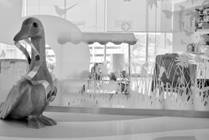
Condition
Meningitis
Meningitis is an infection of the meninges. These are the membranes that cover the brain and spinal cord.
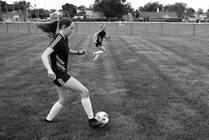
Condition
Elbow Dislocation
The elbow joint is made up of three bones. An elbow dislocation is an injury to the elbow joint that causes the humerus and ulna to be moved from their normal spot, so they no longer fit together.

Condition
Sports Medicine: High Ankle Sprain
A high ankle sprain is the stretching and/or tearing of the ligaments that connect the shin bones just above the ankle. High ankle sprains are less common than other ankle sprains and typically more severe.

Condition
Anterior Cruciate Ligament (ACL) Tear
An anterior cruciate ligament (ACL) tear is a sprain of one of the four major ligaments of the knee. The ACL is a rope-like structure that helps maintain the normal position of the femur (thigh bone) and the tibia (leg bone).

Condition
Hip Pointer (Iliac Crest Contusion)
A hip pointer is a bruise to the bone on the side of the hip called the iliac crest. It is usually from a direct hit to the hip. Bruises cause bleeding from small blood vessels that split, allowing blood to leak into the muscles, tendons, or other soft tissues.

Condition
Hip Dysplasia
Hip dysplasia, also known as developmental dysplasia of the hip (DDH), is an issue that is present at birth. In a child with DDH, the hip socket is shallow. As a result, the head of the femur may slip in and out. It may dislocate. This means it moves partly or completely out of the hip socket.

Condition
Trichomonas
Trichomonas is a sexually transmitted infection (STI). Anyone who is sexually active has a chance of getting trichomonas.
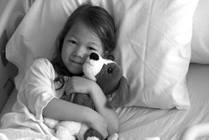
Condition
22q Deletion Syndrome
22q11.2 deletion syndrome, also known as DiGeorge Syndrome, is a condition where there is a small amount of genetic material missing (a microdeletion) on the long arm (the q arm) of chromosome 22. 22q has the potential to impact every system in the body and can lead to a range of health issues.

Condition
Mononucleosis (Infectious)
Infectious mononucleosis, also known as “mono” or "the kissing disease," is an illness usually caused by the Epstein-Barr virus (EBV). Some cases are caused by a virus called cytomegalovirus (CMV). The virus is contagious and spreads when someone comes in contact with an infected person’s saliva.
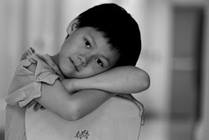
Condition
Failure to Thrive
Failure to thrive (FTT) is a term that is traditionally used for children who have failed to develop and grow normally. FTT occurs when a child is either not receiving enough calories or is unable to properly use the calories that are given, resulting in failure to grow or gain weight.

Condition
Oppositional Defiant Disorder
Oppositional defiant disorder is a type of disruptive behavior disorder in which children frequently defy authority with hostility, leading to serious disturbances in their daily life.

Condition
Ranula
A ranula is a fluid collection or cyst that forms in the mouth under the tongue. It is filled with saliva that has leaked out of a damaged salivary gland. If a ranula stays in the mouth underneath the tongue it is called a simple ranula. If it grows down into the neck it is called a plunging ranula.

Condition
Hypothyroidism
This Helping Hand™ explains the cause, types, symptoms, diagnosis, and treatment for hypothyroidism.

Condition
Gastroparesis
Gastroparesis is a condition that causes food and liquid to stay in the stomach for a long time.

Condition
Ménière's Disease
Ménière's disease is a balance disorder caused by an abnormality found in a section of the inner ear called the labyrinth.

Condition
Limb Length Discrepancy (LLD)
A limb length discrepancy (LLD) is when one arm or leg is longer than the other arm or leg. Leg length discrepancies are very common. There are two main causes of leg length discrepancy: a condition that caused one leg to grow slower or something like an injury affected the growth of the bone.

Condition
Gonadal Dysgenesis
Gonadal dysgenesis, also known as 46XY gonadal dysgenesis and Swyer syndrome, is a condition in which the ovaries or testes (gonads) did not form the right way during pregnancy. Treatment may include surgery or hormone therapy.

Condition
Pelvic Inflammatory Disease
Pelvic inflammatory disease, also known as PID, is an infection in the uterus, the fallopian tubes or the ovaries. PID most commonly occurs in sexually active females, but may also occur in females who have never been sexually active.

Condition
Primary Ovarian Insufficiency (POI)
Primary ovarian insufficiency (POI) is a condition in which a woman’s ovaries do not make enough follicles or the follicles do not function properly. Because of this, there are not enough hormones produced and women stop having menses (their “period”) before the age of 40.

Condition
Allergy to Mold
This Helping Hand™ covers mold, which is a fungus that can be found almost anywhere, both indoors and outside. Only a few types of mold cause an allergic reaction. Mold seeds (or spores) get into the air and are then breathed in.
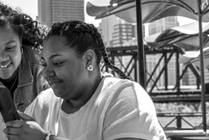
Condition
Premenstrual Syndrome (PMS)
Premenstrual syndrome (PMS) is a collection of behavioral and physical signs and symptoms that affects women a few days before their menses. These symptoms typically occur in a predictable pattern. Symptoms can include mood swings, anxiety, food cravings, bloating, fatigue and headaches.

Condition
Keratosis Pilaris
Keratosis pilaris is a dry skin type. It looks like dry, rough, small bumps that are flesh-colored or pink and can feel like sandpaper or chicken skin. It is not contagious and is usually not itchy. The most common areas for these bumps are on the back of the arms, front of the thighs and the face.

Condition
Ovarian Masses and Tumors
Ovaries can become enlarged due to cysts, masses or neoplasms. The vast majority of ovarian neoplasms in girls and young women are not cancerous. Most ovarian cysts do not cause significant symptoms and resolve spontaneously.
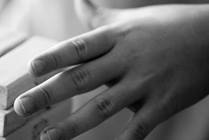
Condition
Chylothorax
When lymphatic fluid (or lymph) collects around the chest wall and lungs, it can cause chest pain or make it hard to breathe. This condition is called chylothorax.

Condition
Posterior Urethral Valves
Posterior urethral valves (PUV) is when there are abnormal tissue flaps in the tube that lets urine flow from the bladder to outside the body (urethra). The tissue flaps cause a blockage that back urine up into the bladder.

Condition
Bartholin’s Cyst
Girls have two Bartholin glands that are located just inside the opening of the vagina. The glands produce fluid that lubricates the vagina. A Bartholin gland cyst forms when the opening of the gland becomes blocked and the fluid cannot get out.

Condition
Anorexia Nervosa
Anorexia nervosa is a type of eating disorder in which a person severely limits the amount of food he or she eats to prevent weight gain or lose weight.
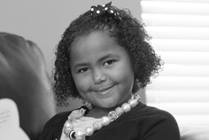
Condition
Submucous Cleft Palate
A submucous cleft palate (SMCP) results from a lack of normal fusion of the muscles within the soft palate as the baby is developing in utero. Frequent middle ear infections, nasal speech and early feeding difficulties may be the first indicators that a child has a submucous cleft palate.
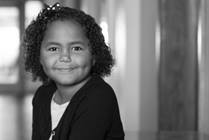
Condition
Nosebleeds (Epistaxis)
Nosebleeds, also called epistaxis, commonly occur in children for a number of reasons.
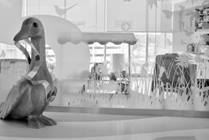
Condition
Cradle Cap
Seborrheic dermatitis, also known as cradle cap, is very common in infants and children. It appears as scaly, itchy, white, yellow or red patches. It most often appears on the scalp but can also be found on the face, ears, or in body folds such as under the arms and behind the knees.
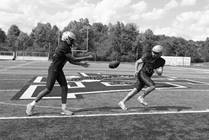
Condition
Sports Hernia
A sports hernia is a soft tissue injury in the groin area. It often occurs during sports that require repeated kicking or quick change of direction.

Condition
Ectopic Ureterocele
An ectopic ureterocele is when there is an abnormality in the renal system, usually with an extra tube that drains pee (urine) into the wrong place.

Condition
Molluscum Contagiosum
Molluscum contagiosum is a viral skin infection that causes pinpoint lesions on the skin. Molluscum contagiosum is part of the pox virus family. This virus is spread through direct skin-to-skin contact.
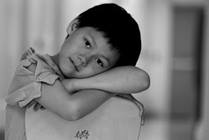
Condition
Thyroglossal Duct Cyst
A thyroglossal duct cyst is typically noticed as an area of fullness or a lump in the midline of the neck, usually just above the voice box.
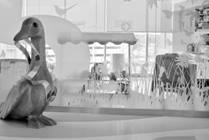
Condition
Congenital Diaphragmatic Hernia
Congenital diaphragmatic hernia (CDH), is a rare congenital condition where the muscles in the diaphragm do not grow together, leaving a hole. The hole allows the intestines and other organs (stomach, liver) to move up into the baby’s chest. When this happens, it makes it hard for the lungs to grow.
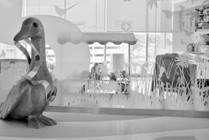
Condition
Congenital Lung Lesions
Congenital lung lesions are a group of conditions where part of the lung has an abnormal growth or mass. Congenital pulmonary airway malformation (CPAM), bronchopulmonary sequestration and congenital lobar emphysema are the most common types of congenital lung lesions.
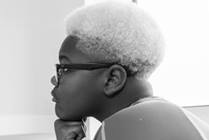
Condition
Irritable Bowel Syndrome
This Helping Hand™ covers irritable bowel syndrome (IBS) which is a common disorder that affects the large intestine (colon). Symptoms are caused by changes in how the GI tract works. IBS is a group of symptoms that occur together, not a disease.

Condition
Craniopharyngioma
Craniopharyngioma is a rare tumor that develops at the central, bottom portion of the brain. It can affect the pituitary gland, optic pathway, and hypothalamus.

Condition
Strep Throat (Bacterial)
Most sore throats are caused by viruses. Strep throat is a contagious sore throat that comes on suddenly and is caused by bacteria (germs) called streptococci, or strep for short. Antibiotic medicine must be given as soon as possible to prevent the strep germs from spreading in the body.

Condition
Elevated Liver Enzymes
Elevated (too high) levels of liver enzymes are a warning sign that something might be harming the liver. Two of these enzymes are alanine aminotransferase (ALT) and aspartate aminotransferase (AST). Symptoms of elevated liver enzymes may include jaundice and swelling of the abdomen, arms or legs.

Condition
Pertussis (Whooping Cough)
In this Helping Hand™ document, we discuss pertussis, also known as whooping cough. Pertussis is an infection of the respiratory tract caused by bacteria. The bacteria are easily spread by breathing in droplets from an infected person who coughs or sneezes. Call 911 if your child stops breathing.

Condition
Polycystic Kidney Disease
Learn about the two different types of Polycystic Kidney Disease.

Condition
Cleft Lip and Palate
Cleft lip and/or cleft palate is the most common birth defect in the United States. A cleft lip is a separation of the upper lip, often involving the upper gum line. A cleft palate is an opening or split in the roof of the mouth and may involve the soft palate alone or both the soft and hard palate.

Condition
Adnexal Cysts
Adnexal cysts are fluid-filled structures that can develop in the fallopian tubes and ovaries. They are usually caused by hormonal stimulation or bleeding at the time of ovulation.

Condition
Atypical Teratoid/Rhabdoid Tumor (ATRT)
An atypical teratoid/rhabdoid tumor (ATRT) is a fast-growing tumor that grows in the brain or spinal cord. ATRTs usually occur in isolation, meaning the tumor does not spread to other parts of the body.
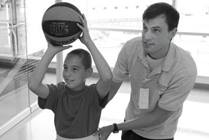
Condition
Diffuse Intrinsic Pontine Glioma (DIPG)
Diffuse intrinsic pontine glioma, also know as DIPG, is an aggressive, malignant brain tumor that develops in a part of the brainstem called the pons.

Condition
Avoidant/Restrictive Food Intake Disorder
Avoidant/restrictive food intake disorder (ARFID) is a mental health diagnosis that is characterized by extreme picky eating and little interest in, or fear of, food or eating.

Condition
Legg-Calve-Perthes Disease
Legg-Calve-Perthes disease, often called Perthes disease, is an uncommon condition in children affecting the hip. Perthes disease occurs when blood flow to the ball at the top of the thigh bone (femur) temporarily stops. If the growing bone does not get enough blood, it dies and collapses.

Condition
Lichen Sclerosus (LS)
Lichen sclerosus (LS) usually affects the area outside the vagina (vulva). The most common symptoms of LS are vulvar itching, irritation, pain and bleeding.

Condition
Conduct Disorders
Conduct disorder refers to a group of behavioral and emotional problems characterized by a disregard for others. Children with conduct disorder have a difficult time following rules and behaving in a socially acceptable way.

Condition
Ewing Sarcoma
Ewing sarcoma is a type of bone or soft tissue cancer. It is the second most common tumor of the bone and affects children and young adults.
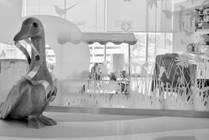
Condition
Respiratory Distress
This Helping Hand™ is about respiratory distress illnesses in children. These illnesses cause breathing problems. Call 911 or take your child to the closest emergency room if you think they're having trouble breathing.

Condition
Pediatric Ptosis
Ptosis is an eye condition that involves drooping of the upper eyelid(s). The eyelid may droop just a little, or enough to cover the pupil. Ptosis can prevent normal visual development and cause amblyopia (lazy eye). It can also block part of the visual field.
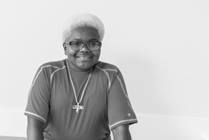
Condition
Zika Virus
This Helping Hand™ covers Zika, a disease caused by the Zika Virus. A person becomes infected by the bite of an infected Aedes mosquito or by having unprotected sex with an infected person. Symptoms can include fever, rash and joint pain.
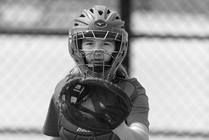
Condition
Sports Medicine: Low Back Strain/Sprain
The low back is a complex structure of bone and muscle that is supported by cartilage, tendons, ligaments, and fed by a network of blood vessels and nerves. Certain motions, such as bending, twisting or lifting, can sometimes lead to a low back strain or sprain.

Condition
Glomerulonephritis
Glomerulonephritis is a kidney disease that involves inflammation of tiny filter units in the kidneys called glomeruli. Due to inflammation, these filters can leak blood and protein into the urine. Symptoms may include dark brown-colored urine (from blood and protein) and diminished urine output.
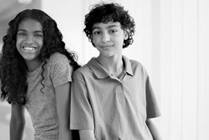
Condition
Perioral Dermatitis
In this Helping Hand™ document, we discuss perioral dermatitis, which is a common dry or bumpy rash that can occur around the mouth, the nose and the eyes. To treat the rash, it is important to stop using any topical steroids. Instead, your child’s doctor may prescribe topical or oral antibiotics.

Condition
Peutz-Jeghers Syndrome (PJS)
Peutz-Jeghers syndrome is an inherited syndrome which typically results in hamartomatous polyps throughout the digestive tract, lifetime cancer risk and blue/black freckling or macules that can be seen on the lips, mouth, nostrils, hands, feet and genitalia.

Condition
Labial Adhesions
Labial adhesions, or labial agglutination, occur when the labia minor (inner lips of the vulva) are stuck together, covering the vaginal opening. The vast majority of girls with labial adhesions have no symptoms and do not require treatment as the adhesions will resolve on their own.

Condition
Non-Alcoholic Fatty Liver Disease
Non-alcoholic fatty liver disease (NAFLD) is the most common chronic liver disease in American children. NAFLD occurs when too much fat builds up in the liver. Excess fat in the liver and elsewhere in the body makes it harder for the liver to work well. Over time, NAFLD can cause other health issues.

Condition
Aortic Stenosis
Aortic stenosis is a heart condition where the valve that controls blood flow from the heart to the body is too narrow. It can be treated with surgery or catheterization.

Condition
Pulmonary Hypertension
Pediatric pulmonary hypertension (PH) is a disease that affects the blood vessels in the lungs. These vessels, called the pulmonary arteries, carry blood to the lungs from the right side of the heart. The high blood pressure causes the pulmonary arteries to narrow.

Condition
Congenitally Corrected Transposition of the Great Vessels
Congenitally corrected transposition of the great vessels (CCTGA; l-TGA) is an uncommon congenital heart abnormality, where the receiving chambers (atria) are connected to their opposite pumping chambers (ventricles) because the ventricles are switched from their normal anatomic positions.

Condition
Hemolytic Disease of the Fetus and Newborn (HDFN)
Hemolytic disease of the fetus and newborn (HDFN) is a blood disorder that causes a baby’s red blood cells to break down quickly (hemolysis). HDFN occurs when there is a mismatch between the mother’s and baby’s blood type and/or Rh factor during pregnancy. Hemolysis causes anemia and jaundice.

Condition
Substance Use Disorders
When a person loses control and misuses a substance like alcohol or drugs, it can become a harmful habit. This is called substance use disorder.

Condition
Type 2 Diabetes
Type 2 diabetes is a chronic condition that occurs when your body makes insulin but does not know how to use it well. This is called insulin resistance. Insulin is a hormone that is made in the pancreas that helps glucose (sugar) get into cells and make energy. Currently, diabetes has no cure.
Condition
Allergic Rhinitis
In this Helping Hand™ document, we discuss allergic rhinitis. There are two main types of allergic rhinitis: seasonal (occurs certain times of the year) and perennial (happens all year). When symptoms occur in late summer or early fall, some people call it hayfever. Small changes at home can help.

Condition
Heterotaxy Syndrome
Heterotaxy syndrome, also called isomerism, occurs when the heart and other organs are in the wrong place in the chest and abdomen. This complex heart condition commonly affects the lungs, liver, spleen, stomach and intestines. There are two types: right atrial isomerism and left atrial isomerism
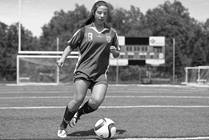
Condition
Sports Medicine: Deltoid Ligament Sprain
The deltoid ligament is a triangle-shaped ligament on the inner ankle which is stronger and more compact than the outer ligaments. Deltoid injuries are very rare and most happen with eversion or along with a high ankle sprain.

Condition
Sports Medicine: Cervical Strain and Sprain
A cervical strain or sprain is an injury to the muscles or ligaments in the back of the neck.

Condition
Delirium
Delirium is a serious disturbance in mental abilities. It involves changes in behavior, confused thinking, and reduced awareness of a person's surroundings. Delirium is a serious complication of medical illness.
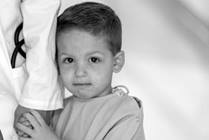
Condition
GI Bleeding (Upper and Lower)
Pediatricians and pediatric gastroenterologists see this quite regularly. It is estimated that GI bleeding accounts for 1% of all pediatric hospitalizations.

Condition
Turf Toe
Turf toe is an injury to the capsule and ligaments of the joint at the base of the big (first) toe. Pain is usually worst on the bottom of the foot.

Condition
Rumination Syndrome
Rumination syndrome is a condition involving involuntary regurgitation of food.

Condition
Chlamydia
Chlamydia is a sexually transmitted infection (STI) caused by the germ Chlamydia trachomatis. Anyone that is sexually active is at risk of getting chlamydia.
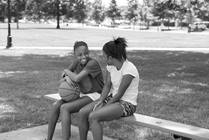
Condition
Lateral Epicondylitis (Tennis Elbow)
Lateral epicondylitis, or tennis elbow, is an injury to the outer side of the elbow where the muscles and tendons attach to the bone. The muscles or tendons of the forearm that pull your wrist back (extend the wrist) get damaged.
Condition
Pediatric Obesity
The American Academy of Pediatrics recommends using body mass index (BMI) to screen for overweight children beginning at age 2 and through age 19.
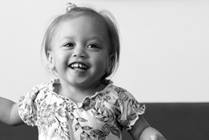
Condition
Pyelonephritis
Pyelonephritis is the medical term for a kidney infection. The most common cause of acute kidney infections in children is a bacterial urinary tract infection (UTI) that has spread from the bladder to the kidneys. Repeat acute kidney infections can lead to the need for a kidney transplant.

Condition
H. Pylori
H. pylori, also known as Helicobacter pylori, is a bacteria that infects the stomach. Although common, this infection rarely shows any signs or symptoms.

Condition
Undescended Testicle
Testicles are formed prior to birth in the abdomen below the kidneys, and progressively descend during pregnancy from the abdomen through the groin into the scrotum. An undescended testicle is a testis that fails to descend into the scrotum.

Condition
Sleep Apnea
A sprain is an injury to a ligament, or band of tough, elastic-like tissue that connects bone to bone and holds a joint in place.

Condition
Enlarged Lymph Nodes
Hundreds of these lymph nodes are present in your child’s neck and face. When an infection is present, lymph nodes can become enlarged as an immune response is mounted.
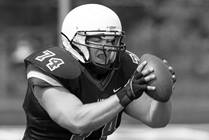
Condition
Spinous Process Apophysitis
Spinous process apophysitis is an injury to an apophysis in the low back.

Condition
Inflammatory Bowel Disease
Inflammatory Bowel Disease (IBD) refers to chronic inflammation of the intestines not due to infections or other identifiable causes. There are two main types of IBD: ulcerative colitis and Crohn’s disease. The most common symptoms are diarrhea, sometimes with blood and mucus and abdominal pain.
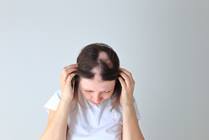
Condition
Alopecia Areata
This Helping Hand is about hair loss related to alopecia areata. It also discusses diagnosis and treatment.

Condition
Food Allergy
A food allergy is when the immune system mistakenly responds to a food protein, resulting in inflammation or damage to the intestinal tract. Allergies can present with an immediate or a delayed reaction.

Condition
Pneumomediastinum
In this Helping Hand™, we discuss the causes and treatment pneumomediastinum, which is a condition that happens when air escapes from the lungs, airways, or esophagus into the mediastinum.

Condition
Pelvic Masses
Pelvic masses may be caused by adnexal cysts, ovarian masses and tumors and uterine abnormalities. The most common reason the uterus would become enlarged in a girl or young woman is due to build-up of menstrual blood, also known as an outflow tract obstruction.

Condition
Hypospadias
Many children with hypospadias will have a partially-formed or hooded foreskin with deficient skin on the bottom side of the penis where the urethra is located.

Condition
Allergies to Foods
A food allergy occurs when the body’s immune system overreacts to certain foods. The body then makes antibodies to that food and an allergic reaction occurs. Anaphylaxis is a severe and possibly life-threatening reaction. If a severe reaction occurs, use the EpiPen and call 9-1-1 immediately.

Condition
Liver Failure in Children
Liver failure happens when the liver becomes so sick and damaged that it stops working, either partly or completely. Although this is rare, liver failure can happen even in children. Many of them recover well, but others become extremely ill, and some may need a liver transplant to survive.

Condition
Arthrogryposis
Arthrogryposis, also called arthrogryposis multiplex congenita (AMC), involves a variety of non-progressive conditions that are characterized by multiple joint contractures (stiffness) and involves muscle weakness found throughout the body at birth.

Condition
Sports Medicine: Degenerative Disc Disease
Degenerative disc disease is the slow breakdown of one or more intervertebral discs.

Condition
Dermoid Cyst
Dermoid cysts, also called epidermoid cysts or dermal/epidermal inclusion cysts, are masses in children and adults, most commonly found in the head, face, neck and upper chest. Dermoid cyst ablation is a minimally-invasive procedure that is an alternative to surgically removing the dermoid cyst.

Condition
Unicameral Bone Cyst
Although unicameral bone cysts are benign, active unicameral bone cysts can cause bones to weaken or fracture.

Condition
Truncus Arteriosus
Truncus arteriosus is a rare heart defect where only one large blood vessel forms instead of two. It can be treated with surgery.
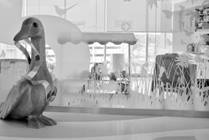
Condition
Cloacal Exstrophy
Cloacal exstrophy, also known as OEIS syndrome, is a rare congenital birth defect that occurs when the lower abdominal organs do not form properly during fetal development. Babies with this condition are born with organs outside the body, such as the bladder, small and large intestine.

Condition
Wilms' Tumor
This Helping Hand™ covers Wilms' tumor, a cancerous tumor of the kidney. It is thought to be caused by abnormal genes. The tumor may occur at any age, but it is most common in children 1 to 5 years of age.

Condition
Pulmonary Arterial Hypertension (PAH)
Pulmonary hypertension is a rare lung disease in which the blood pressure in the pulmonary arteries are high.

Condition
Tenosynovial Giant Cell Tumors
There are three kinds of tenosynovial giant cell tumors (TGCTs). One type grows in the tissue that lines the joints (synovium). The second kind grows in the area that cushions the joints and tendons (bursa). The third type grows in the lining around the tendons (tendon sheath).
Condition
Upper Respiratory Infections (Colds)
The common cold is a respiratory infection caused by a virus (germ). Rhinoviruses are the most common cause. Viruses are spread by breathing in air droplets of the infected person who coughs, sneezes or even laughs less than 6 feet from your child. The virus can also be spread by touching something that the infected person has sneezed, coughed or drooled on.

Condition
Diffuse Midline Glioma (DMG)
Diffuse midline glioma (DMG) is a rare, fast-growing tumor of the central nervous system that can occur in the brain or spinal cord. It affects up to 300 children annually. Most cases have no known cause and result from genetic changes that happen by chance.

Condition
Soft Tissue Sarcomas
Soft tissue sarcomas start as painless lumps or swellings, but they are cancerous tumors. They occur most commonly in the arms, legs, chest and abdomen in children.

Condition
Spontaneous Pneumothorax
This Helping Hand™ covers a spontaneous pneumothorax, which usually happens when a weak part of the lung is leaking air. These areas are like blisters on the lungs, called blebs. They can burst and leak air into the pleural space.

Condition
All About Surgeries and Procedures
To prepare for a surgery or procedure at Nationwide Children's Hospital, we would like to tell you what to expect before, during, and after surgery.

Condition
Alagille Syndrome
Doctors in the Pancreas and Liver Care Center can help treat Alagille syndrome, a genetic disorder that primarily involves a mutation in the gene called JAG1. It affects one in every 30,000 to 70,000 live births and can involve multiple organ systems including the liver, the heart, bones, eyes, kidneys, pancreas and brain.

Condition
Marfan Syndrome
Marfan Syndrome is an inherited disorder of connective tissue caused by genetic mutations that result in the dysregulation of the proteins of the extracellular matrix (fibrillin). The diagnosis is based on signs, family history, and results of diagnostic tests.

Condition
Heart Murmurs
Murmurs are extra or unusual sounds made by blood circulating through the heart's chambers or valves, or through blood vessels near the heart.

Condition
Hypertension (High Blood Pressure)
Hypertension, also called high blood pressure, can cause damage to the arteries and organs over time. It is estimated that about 3-4% of children have hypertension.

Condition
Congenital Heart Defects
Congenital heart defects are problems with the heart that are present at birth. Some are simple and don’t need treatment, while others require surgery.
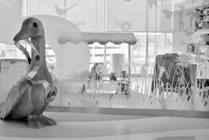
Condition
Twin-to-Twin Transfusion Syndrome
Identical twins who share one placenta may be at risk for Twin-to-Twin Transfusion Syndrome (TTTS). The single placenta contains blood vessels going from one baby to the other. In TTTS, blood from the smaller donor twin is transferred to the larger recipient twin, causing an uneven exchange of blood.
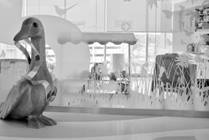
Condition
Amniotic Band Syndrome (ABS)
Amniotic band syndrome (ABS) is a rare congenital disorder that occurs when the lining of the amniotic sac is damaged during pregnancy, creating strands of tissue that wrap around different parts of the developing fetus or umbilical cord. The compression causes a wide range of birth defects.
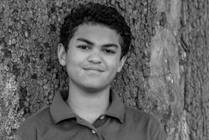
Condition
Headaches
Most headaches in children are not serious. Children’s headaches are very rarely from serious diseases or physical problems. Because of their young age, children may not know how to describe pain. Symptoms of headaches include acting quieter or moodier than normal and a drop in their activity.
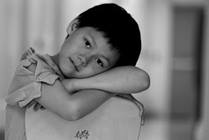
Condition
Muscular Dystrophy
The muscular dystrophies, or MD, are a group of more than 30 genetic (passed down by parents) neuromuscular disorders, in which defects of muscle (not nerves) cause muscle weakness and difficulties in body movement and control.

Condition
Spinal Muscular Atrophy
Spinal muscular atrophies (SMA) are a group of genetic (passed down by parents) diseases that affect motor neurons (nerve cells) in the spinal cord, causing the weakening of voluntary muscles (muscles that you control).

Condition
Cerebral Palsy (CP)
Cerebral palsy is a group of disorders that affects muscle tone, coordination, and movement. There are many types and severities of CP.

Condition
Kyphosis
Kyphosis is the natural curve of the upper back (thoracic) area of the spine. In the extreme curves, the spine looks like a “hunchback.” Some excessive curves can be passed on by parents. Some are brought on from bad posture, while others can develop from a disorder.
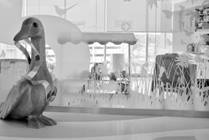
Condition
Acute Flaccid Myelitis
Acute flaccid myelitis (AFM) is a rare but serious nerve-related condition that occurs mostly in children. AFM comes from a virus that is the common cold. AFM attacks the spinal cord and the nerves that go to the muscles. Patients begin with a respiratory illness and then end up with muscle weakness.

Condition
Brachial Plexus
The brachial plexus is a bundle of nerves that separates into the major nerves that supply movement and touch function to the arm.

Condition
Bursitis
Bursitis is swelling or irritation of a bursa. A bursa is a fluid-filled sac that acts as a cushion between tendons, ligaments, bones, and skin.
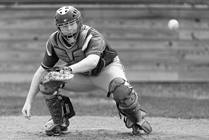
Condition
Rotator Cuff Tendonitis
Rotator Cuff Tendonitis is inflammation of the rotator cuff muscles tendons surrounding the shoulder joint.
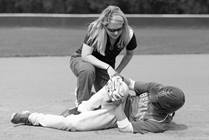
Condition
Meniscus Injuries
The meniscus are two pieces of cartilage located in the knee joint that are responsible for cushioning and adding stability to the knee.

Condition
Thigh and Hip Strains
A strain of the thigh/hip is a stretching or tearing of a muscle and is commonly referred to as a “pulled muscle.”
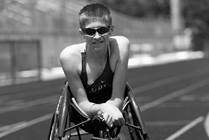
Condition
Shoulder Sprain
A shoulder sprain is a stretching or tearing of the Acromioclavicular (AC) ligament. This is located where your collar bone and shoulder meet, often called the AC joint.
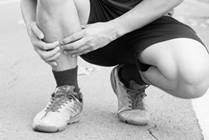
Condition
Shin Splints
Shin splints are a painful condition that affects the front and/or sides of the lower leg.

Condition
Knee Sprain
Knee sprains can be significant injuries that occur from a stretch or tear of the ligaments in and around the knee. The four main ligaments of the knee most often damaged are the Anterior Cruciate (ACL), Posterior Cruciate (PCL), Medial Collateral (MCL) and Lateral Collateral (LCL).

Condition
Osgood-Schlatter's Disease
Osgood-Schlatter's Disease is one of the most common causes of knee pain in active children.

Condition
Osteochondritis Dissecans
Osteochondritis Dissecans (OCD) is a condition in which a piece of cartilage and the underlying bone separate.
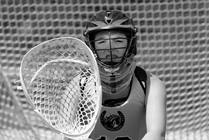
Condition
Patellar Subluxation
A patellar subluxation means that the kneecap has briefly slid out of its normal place in the groove at the center of the bottom end of the thigh bone.

Condition
Patellar Tendonitis
Patellar Tendinitis is inflammation of the patellar tendon located directly below the knee cap.

Condition
Patellofemoral Pain
Patellofemoral pain is when there is pain in the soft tissue of the knee and around the patella (kneecap).

Condition
Autism Spectrum Disorder (ASD)
Autism Spectrum Disorder (ASD) refers to a complex neurodevelopmental disorder that impacts a child’s ability to communicate and interact socially. It also impacts the way the child thinks and behaves.

Condition
Sprains
There are three types of sprains, which range from mild (Grade I) to severe (Grade III).

Condition
Cauliflower Ear
Cauliflower ear is the result of a direct blow to the outer ear. Blood or other fluids fill the space in between and disrupts normal blood flow. Without adequate blood flow, the cartilage is starved of vital nutrients.

Condition
Plantar Fasciitis
Plantar fasciitis occurs when a broad band of tissue located on the bottom of the foot becomes painful and irritated.

Condition
Wrist and Hand Sprains
A sprain of the wrist and hand is a stretching or tearing of the ligaments which connect the bones together and provide stability. A wrist/hand sprain may occur from a direct blow to the area, falling on an outstretched hand, or an abrupt twist or hyperextension.

Condition
Low Back Strain
A low back strain is a stretch or tear of a muscle in the lower back that hold the vertebrae in its proper place. A low back strain can occur from lifting heavy objects, sitting or standing for long periods of time or a direct blow to the area.

Condition
Exercised Induced Asthma (EIA)
Exercise-induced asthma, also known as EIA, is breathing difficulty that is triggered by increased activity. There are many factors that contribute to EIA.

Condition
Contusions Bruises
Contusions, or bruises, are one of the most common types of injuries occurring in active children. A contusion is caused by a direct blow to the body that can cause damage to the surface of the skin and to deeper tissues as well.
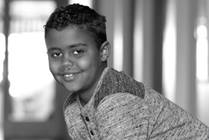
Condition
Persisting Symptoms After Concussion
Most children return to typical function in 3-4 weeks after a concussion. About one in four children can have symptoms that continue for a longer time. This is called Persisting Symptoms after Concussion, or Post-Concussion Syndrome.

Condition
Spondylolysthesis/Spondylolysis
Spondylolysthesis and Spondylolysis are common causes of low back pain in adolescents.
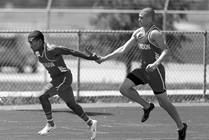
Condition
Foot Sprain or Strain
A foot sprain is a stretching or tearing of the ligaments that connect the bones of the foot. A foot strain is a stretching or tearing of the tendons and muscles in the foot.

Condition
Little League Elbow
Little league elbow is a painful inflammation of the bony bump on the inside of the elbow where the tendons of the muscles that bend your wrist and fingers are located. Little league elbow occurs as a result of overuse to the muscles of the elbow and forearm from activities such as throwing a ball.

Condition
Depression
Clinical depression in children includes several disorders: major depressive disorder, disruptive mood dysregulation disorder, and persistent depressive disorder.

Condition
Attention Deficit Hyperactivity Disorder (ADHD)
Attention Deficit Hyperactivity Disorder (ADHD) is a condition characterized by inattention, impulsiveness and hyperactivity. Symptoms are usually noticed by the time a child starts school. Treatment of ADHD may include family or individual counseling. Medicines may also be prescribed.

Condition
Epilepsy
Epilepsy is a neurological condition involving the brain that makes people more susceptible to having recurrent unprovoked seizures. The two broad categories of epileptic seizures are generalized and partial seizures.

Condition
Leukemia (ALL and AML)
Leukemia (ALL and AML) is the most common form of childhood cancer. It affects the tissues of the body which make the blood cells and the bone marrow. When leukemia strikes, the body makes an abundance of abnormal white cells that invade the marrow and crowd out the normal healthy blood cells.

Condition
Bronchopulmonary Dysplasia (BPD)
Bronchopulmonary Dysplasia (BPD) is a term used to describe long-term breathing problems for premature babies. BPD involves abnormal development of the lungs, and in the most severe cases the lungs are scarred and inflamed. Symptoms can include respiratory distress and assisted breathing.

Condition
Constipation
Many children have constipation at one time or another. Constipation can be defined as more than three days between bowel movements; stools that are large, hard and painful to pass; or incomplete bowel movements and stool backs up in the bowel despite daily bowel movements.
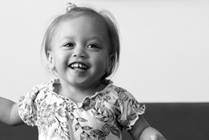
Condition
Constipation: Child Over One Year of Age
This Helping Hand™ covers how constipation is a common problem in children, but it can be a cause for concern for parents. A constipated child has difficulty moving their bowels, does not have bowel movements often enough, or has hard or dry stool (poop).

Condition
Constipation: Infant
This Helping Hand™ covers constipation in infants less than one year of age. It is common, but it can be a concern for parents. Signs of constipation include infrequent stools that are difficult to pass and straining more than normal to have a bowel movement. Even if a baby is not constipated, bowel movements may be irregular.

Condition
Spasticity
Spasticity is a muscle control disorder that involves tight or stiff muscles and an inability to control those muscles. Spasticity affects about 80 percent of people with cerebral palsy and can make normal movement, speech and walking difficult. It can also affect people with traumatic brain injury.
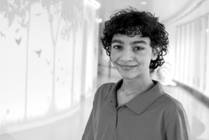
Condition
Pancreatitis
Pancreatitis is an inflammation of the pancreas that can impact children at any age. Children may have acute, acute recurrent or chronic pancreatitis. All three types are serious, their symptoms vary and treatment can range from pain management to surgery.

Condition
Vomiting
Vomiting (throwing up) is most often caused by a virus or stomach bug. Some serious illnesses may also cause vomiting. Vomiting caused by a virus usually lasts only a couple of days. It can often be treated at home.

Condition
Diarrhea
Diarrhea (loose, watery bowel movements) is a common problem in young children. It is usually caused by a virus. It can also be caused by bacteria, something that the child eats or drinks (like too much fruit juice) or starting a new medicine. It rarely means a child has a serious illness.
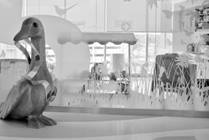
Condition
RSV Infection (Respiratory Syncytial Virus)
Respiratory syncytial virus (RSV) is most common from fall to spring. Symptoms of RSV include sneezing, stuffy or runny nose, sore throat and fever. For healthy babies, it is like getting a cold and can be treated at home. In some infants, RSV can be very serious and may require a hospital stay.
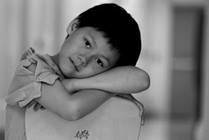
Condition
Dehydration
There are many reasons why children can get dried out or dehydrated. A child can lose too much liquid from the body from diarrhea, vomiting or fever. If the child has mouth sores or a bellyache, they may refuse to drink enough. Babies and younger children are at greater risk.

Condition
Fever
In this Helping Hand™, we discuss fever, which is an increase in the body’s temperature above the normal range. Most doctors agree that a temperature over 101° F is a fever. Fevers lower than 101° F don't need to be treated unless your child is uncomfortable or has a history of febrile seizures.

Condition
Bronchiolitis
This Helping Hand™ covers bronchiolitis, which is an infection of the small airways (bronchioles) caused by a virus. The most common viruses that cause it are RSV, para influenza virus, rhinovirus (common cold), human metapneumovirus and adenovirus. Bronchiolitis is also often called "RSV infection."

Condition
Head Lice
Head lice are tiny, six-legged insects that spend their entire life on human heads. Nits are the eggs of the lice. Nits look like bits of dandruff in the hair but do not flake off when touched. Lice are usually spread from child to child when sharing clothing, combs or brushes.

Condition
Seizures and Epilepsy in Children
A seizure occurs when part(s) of the brain receives a burst of abnormal electrical signals that temporarily interrupts normal electrical brain function.

Condition
Vesicoureteral Reflux (VUR)
Vesicoureteral reflux (VUR) is the abnormal backward flow of urine from the bladder to the kidneys. This backwards flow increases the child’s risk of urinary tract and kidney infections.

Condition
Urinary Tract Infection (UTIs)
Urinary Tract Infections (UTIs) are typically caused by a bacterial infection in the urethra and bladder. Left untreated, a UTI can spread beyond the bladder and travel into the ureters and kidneys, where it becomes an acute kidney infection (pyelonephritis).
Condition
COVID-19 (Coronavirus Disease 2019)
COVID-19 is a serious strain of coronavirus, a large family of viruses that usually cause only mild respiratory diseases, that spreads and infects people easily. The virus that causes COVID-19 is being passed from person to person through droplets of fluid that are coughed or sneezed into the air.

Condition
Pectus Excavatum
Pectus excavatum - also known as sunken chest syndrome - is the most common chest wall disorder treated at Nationwide Children’s.
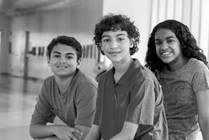
Condition
Pectus Carinatum
Pectus carinatum - also known as pigeon breast - is characterized by a prominent sternum and is usually asymptomatic.





